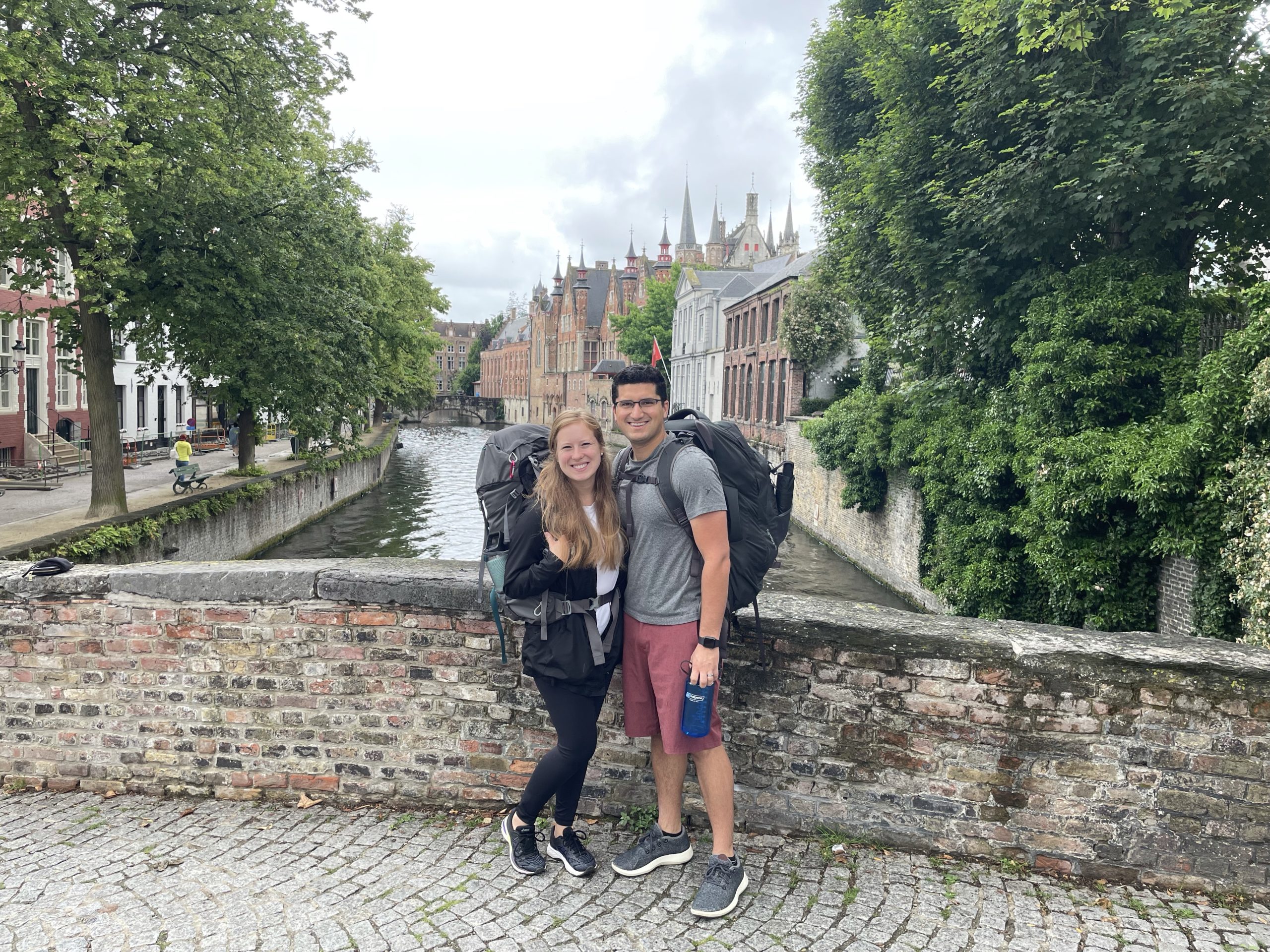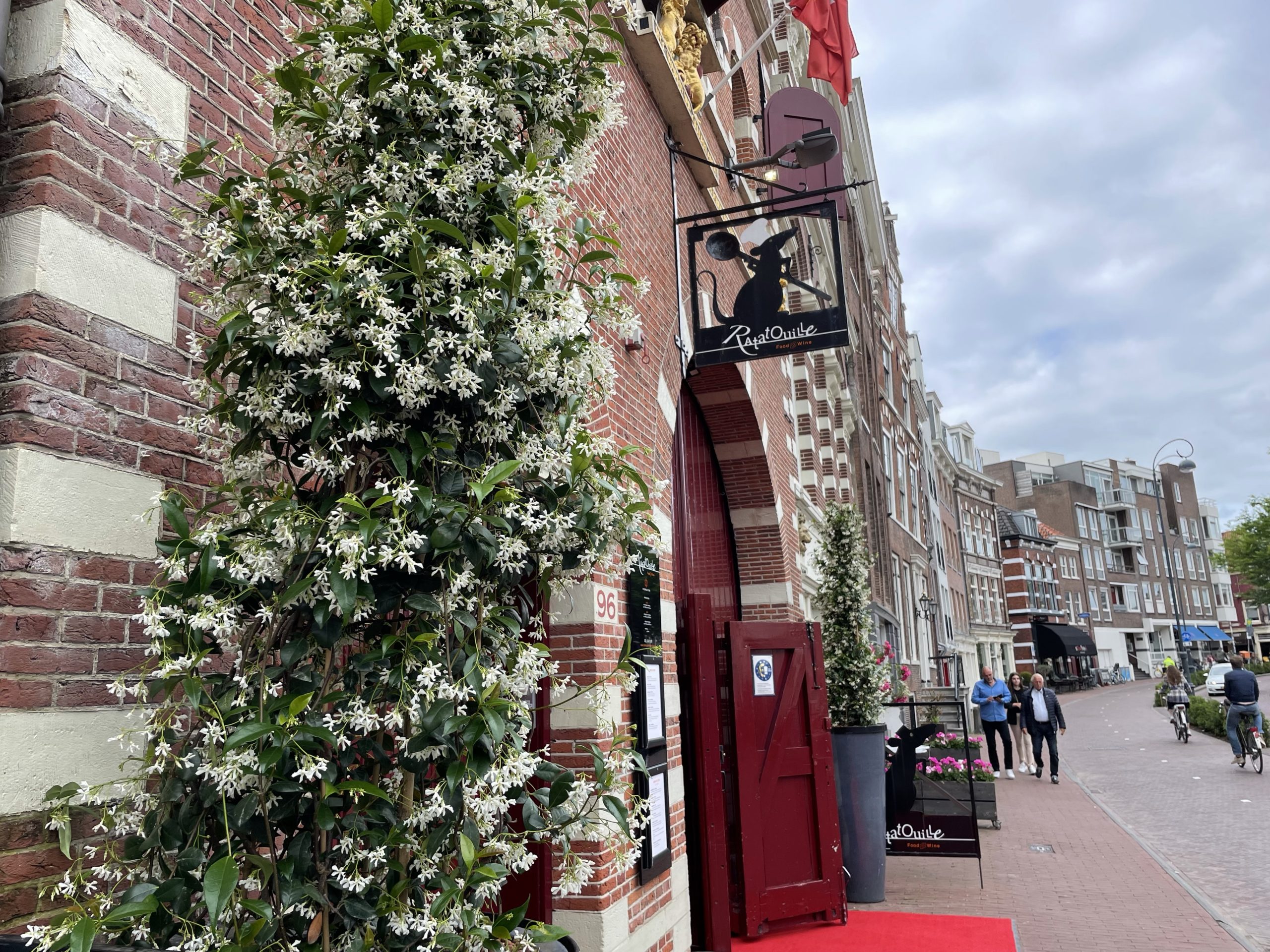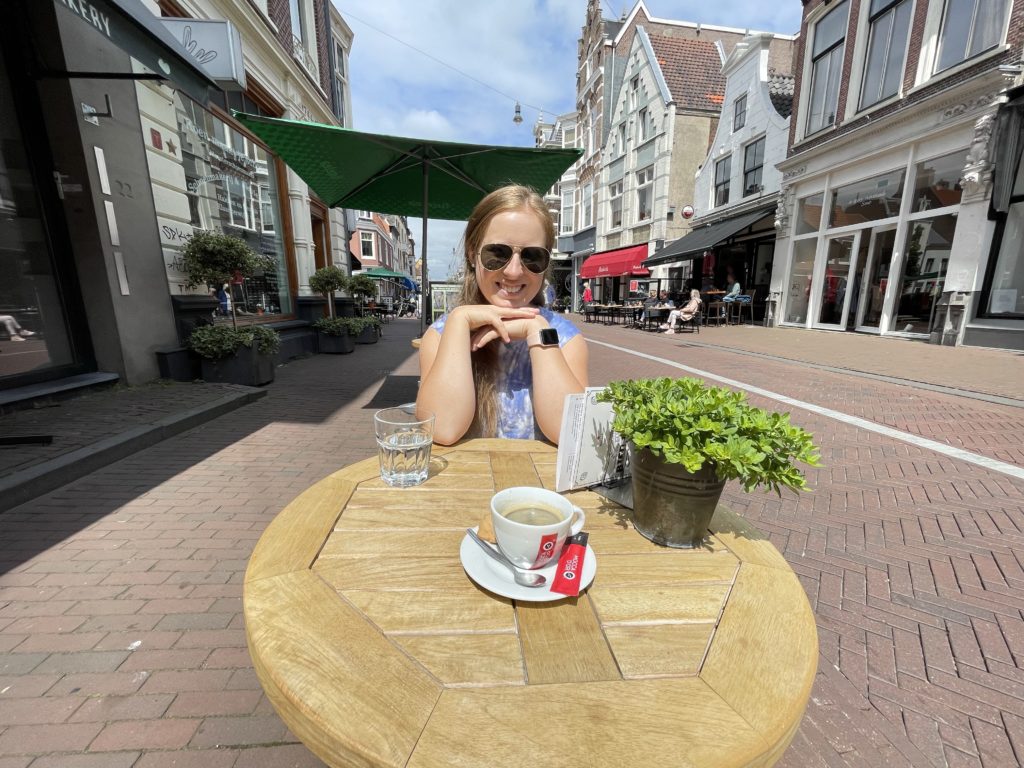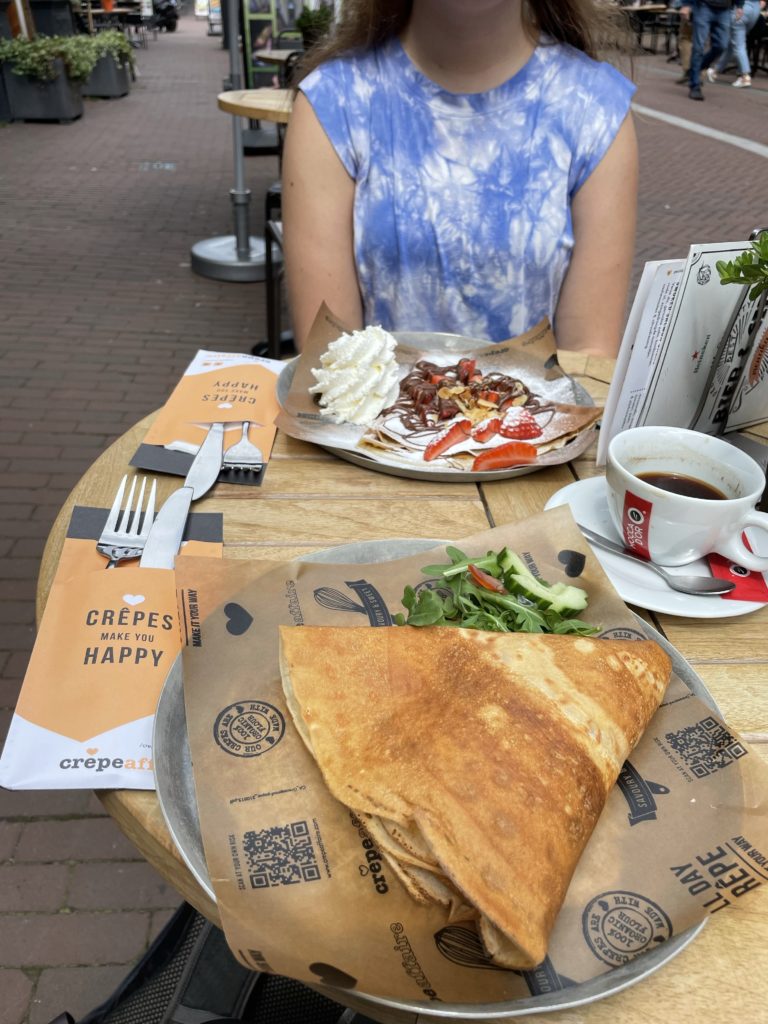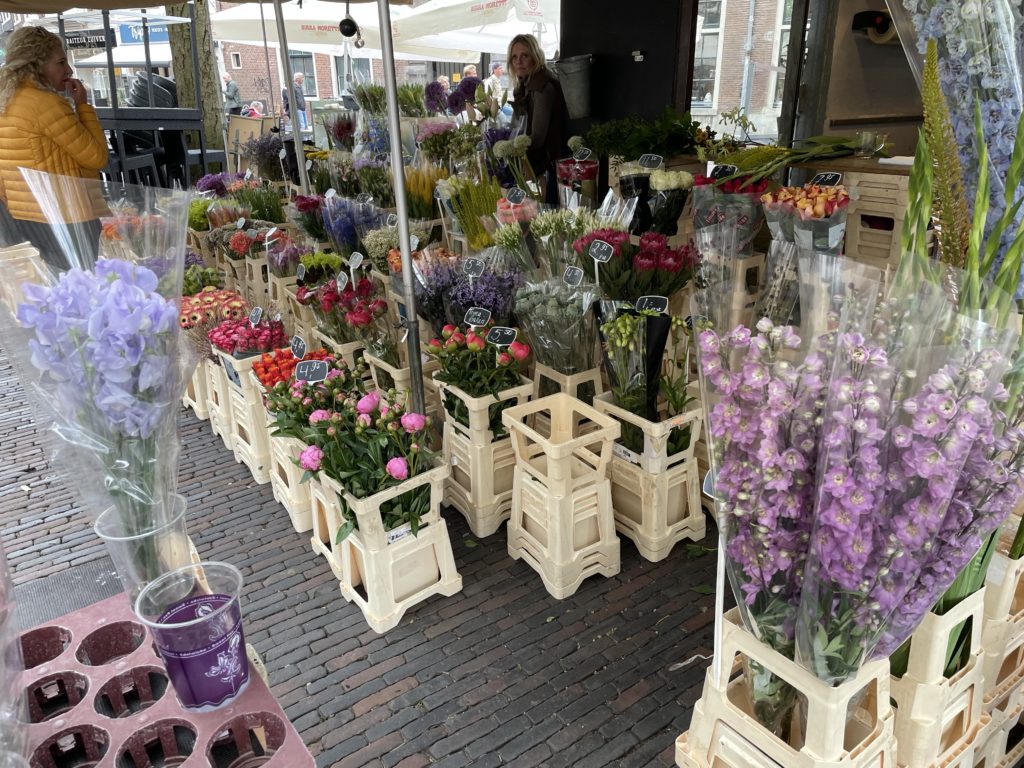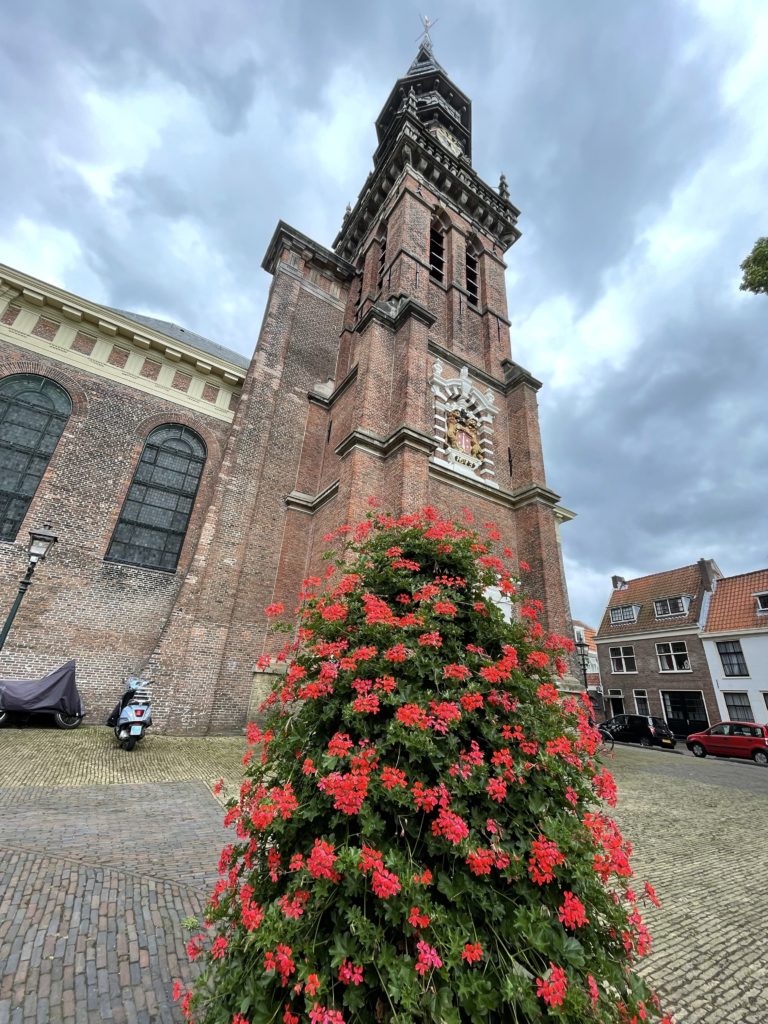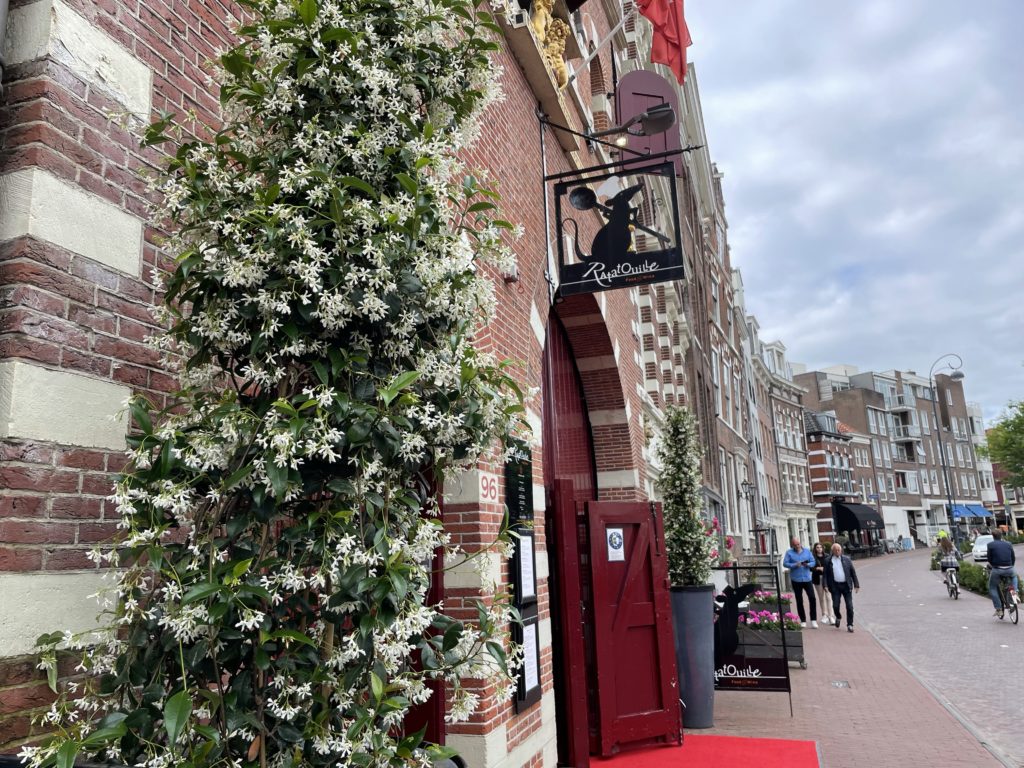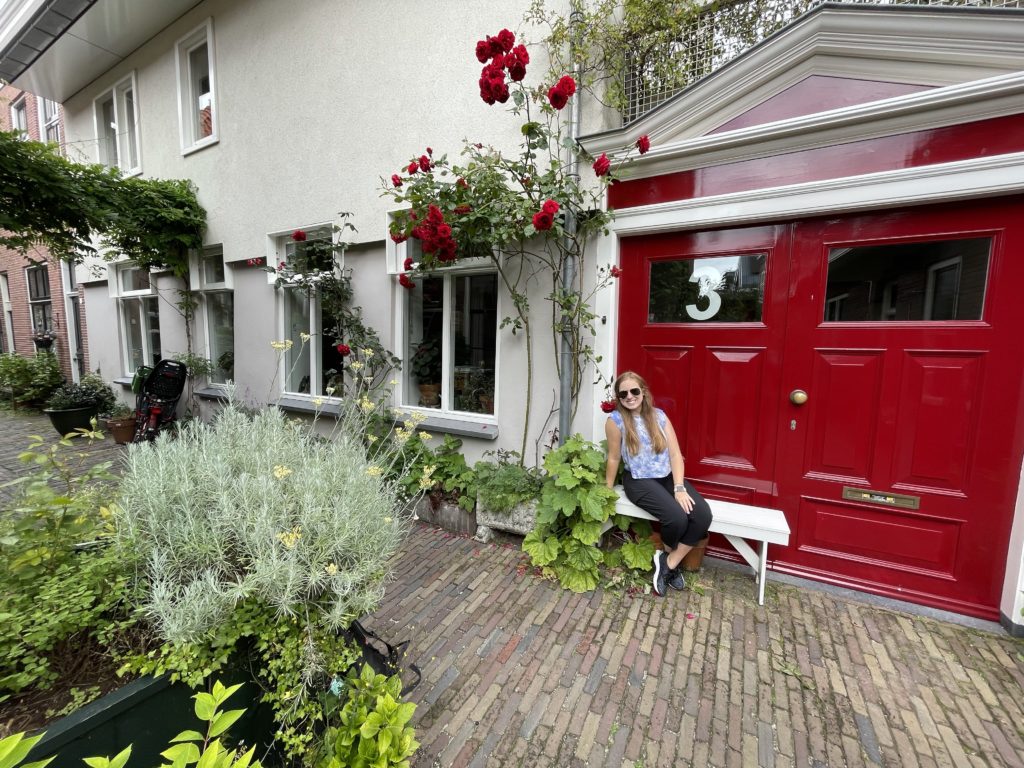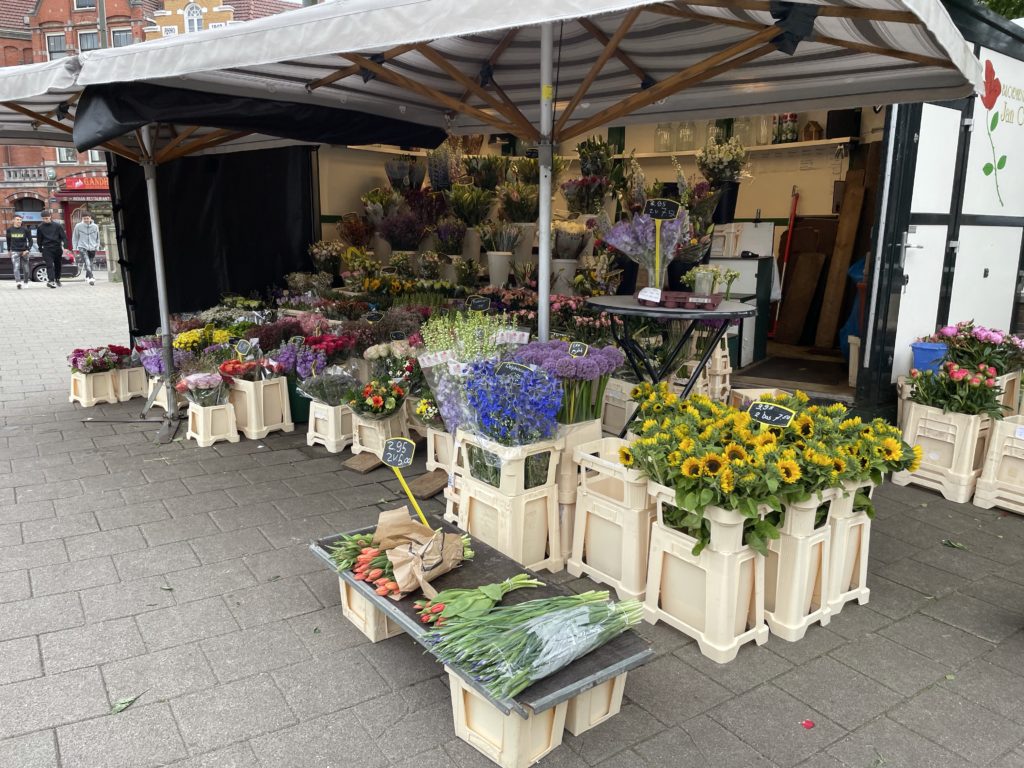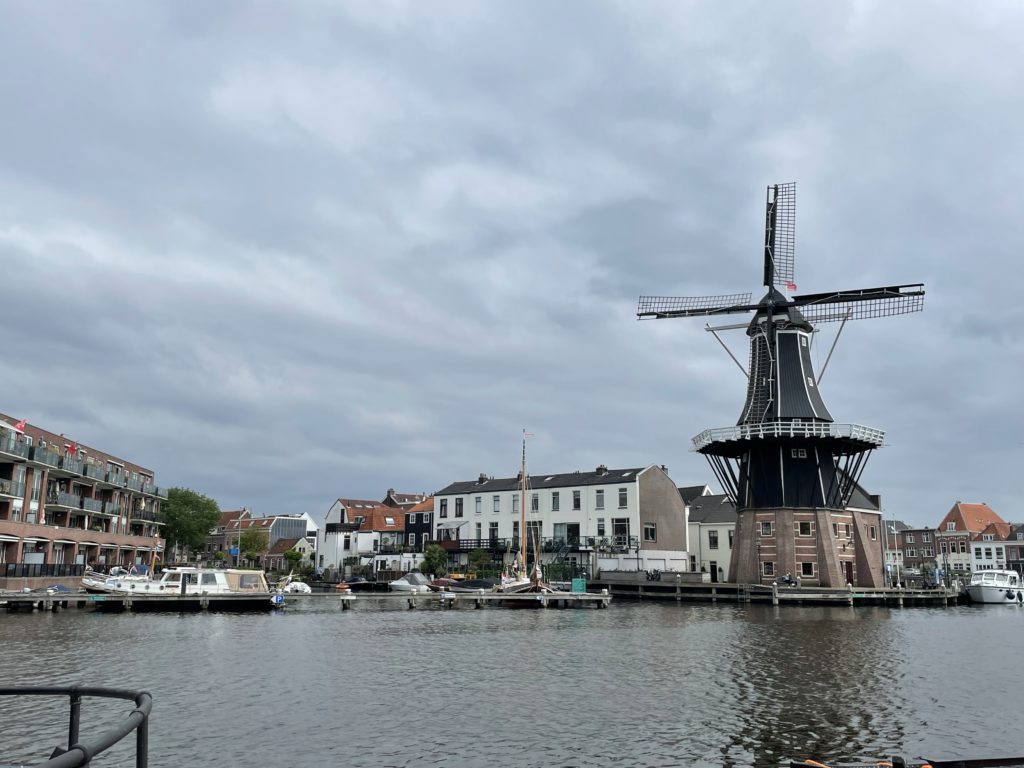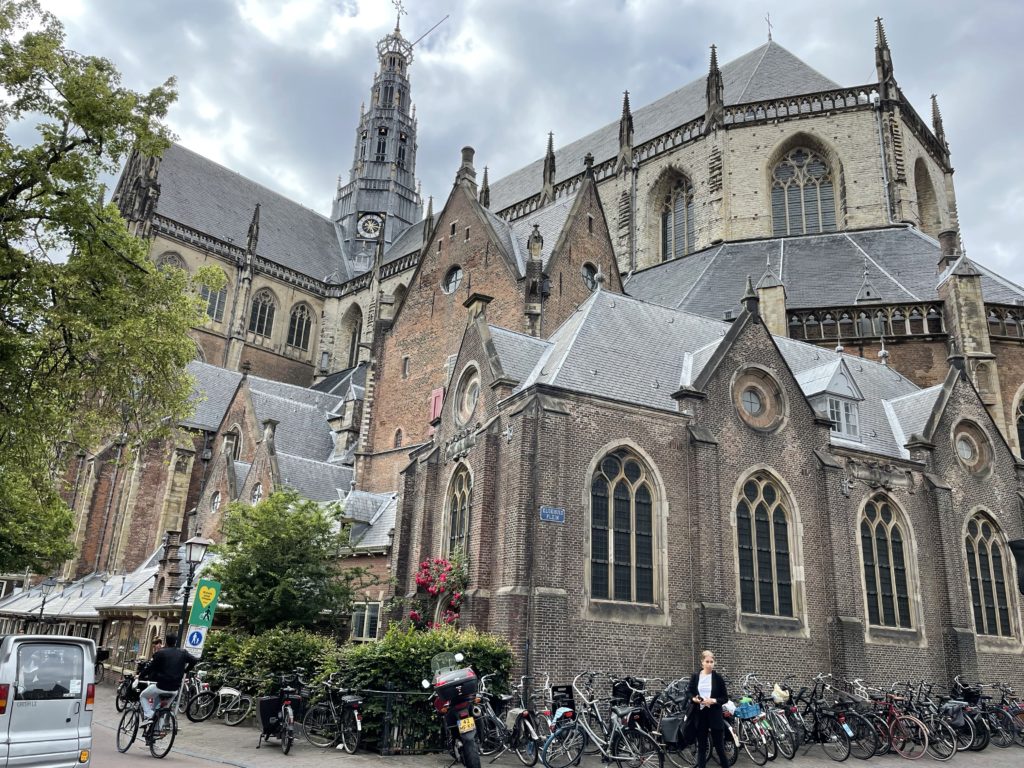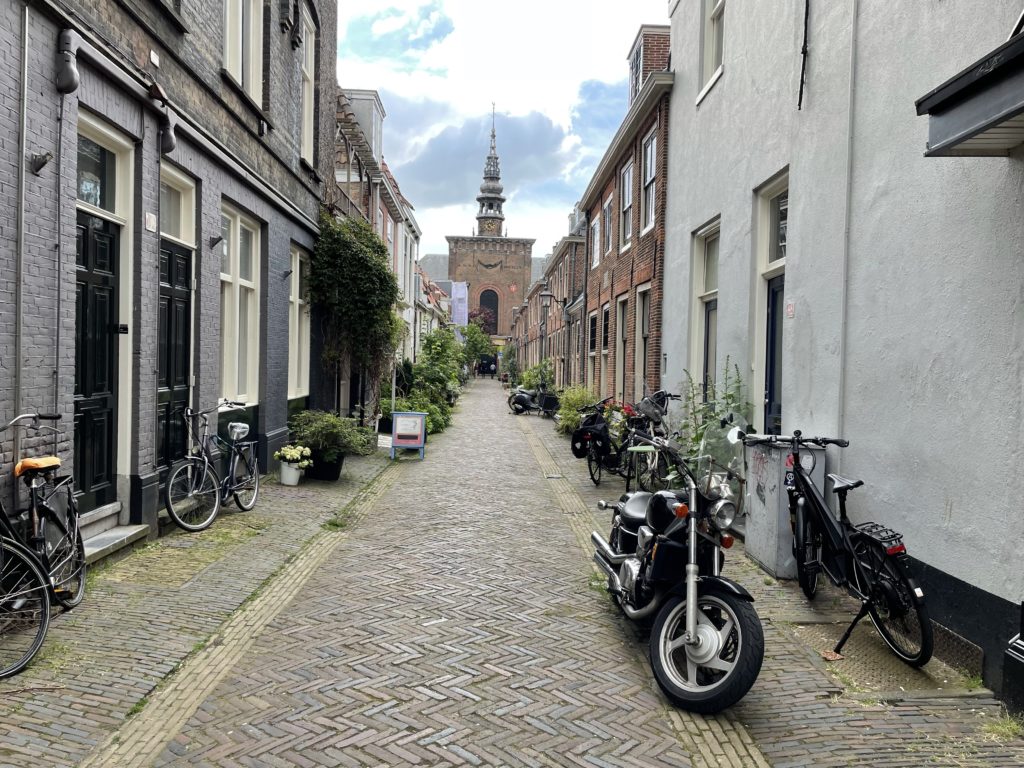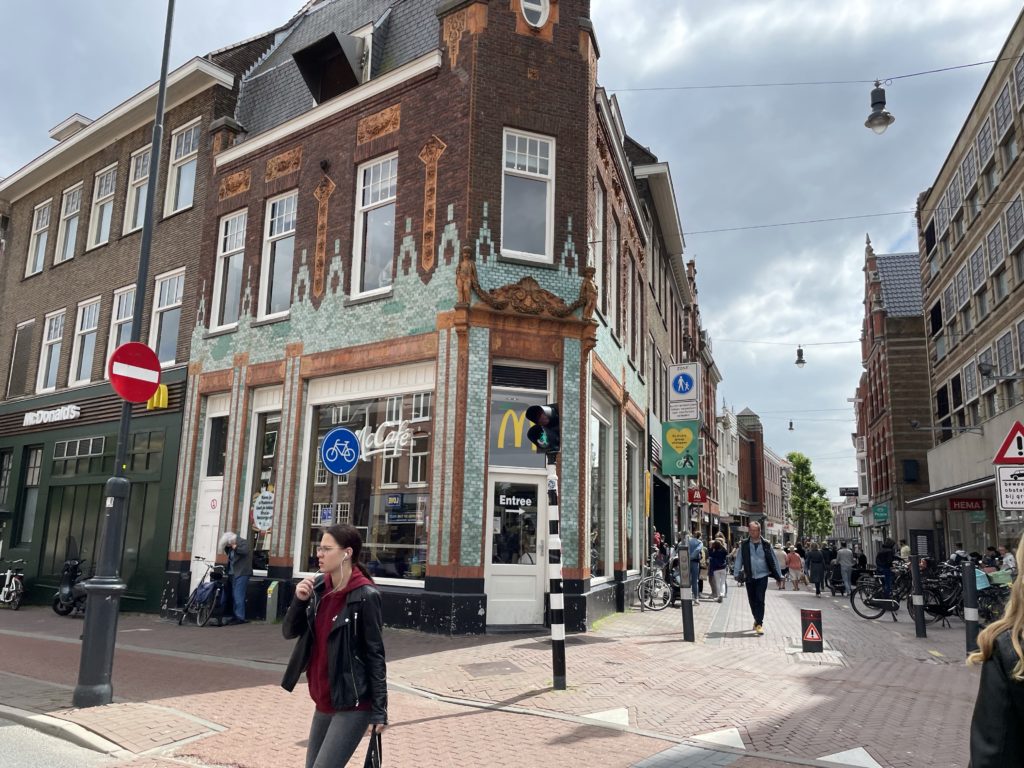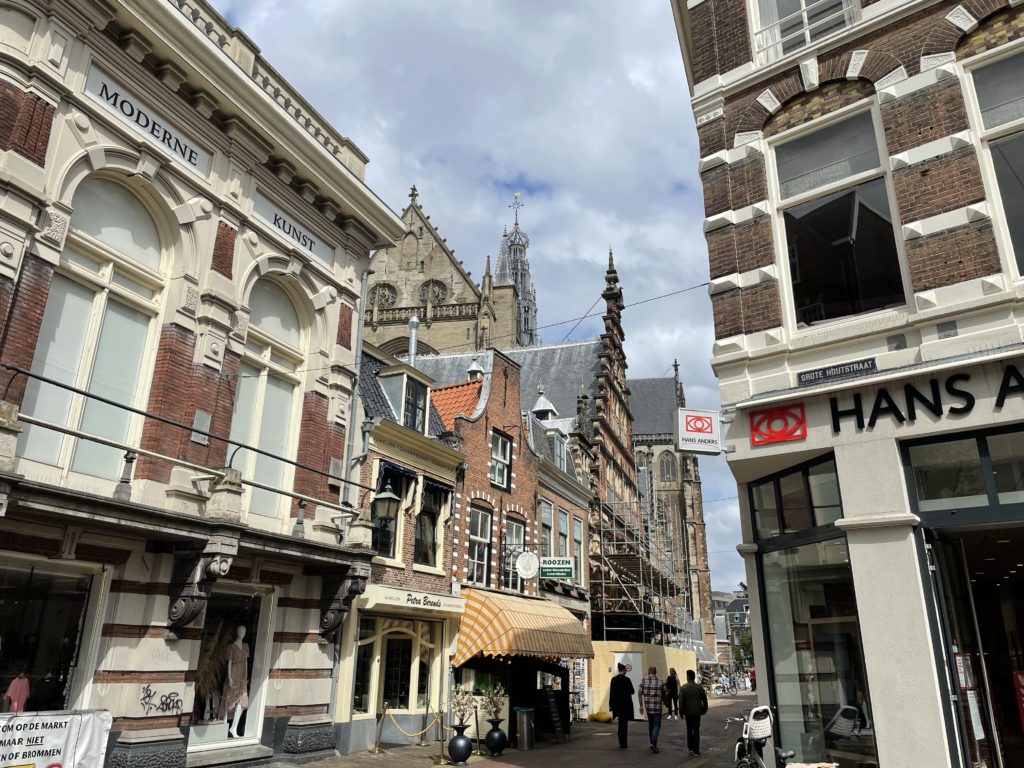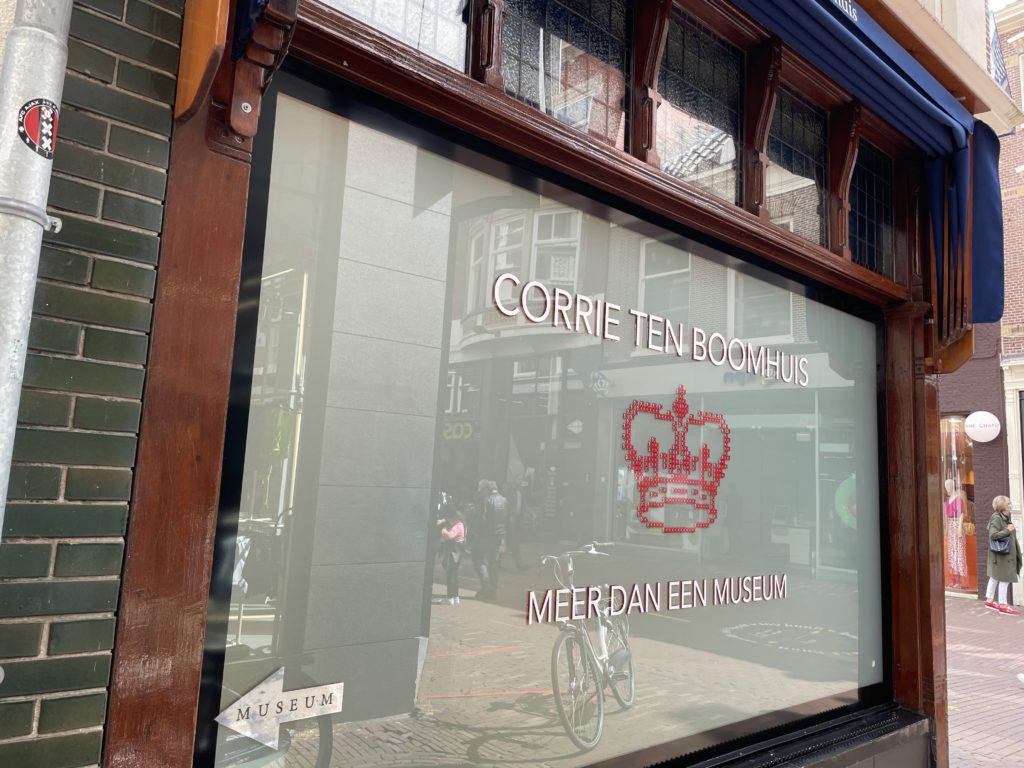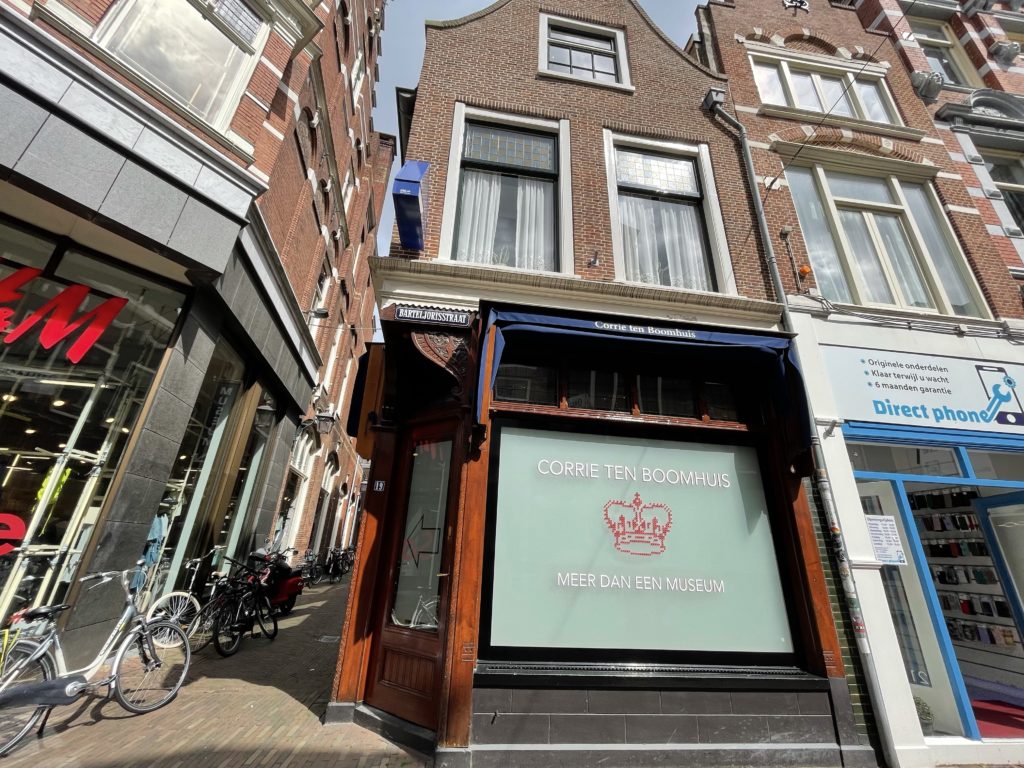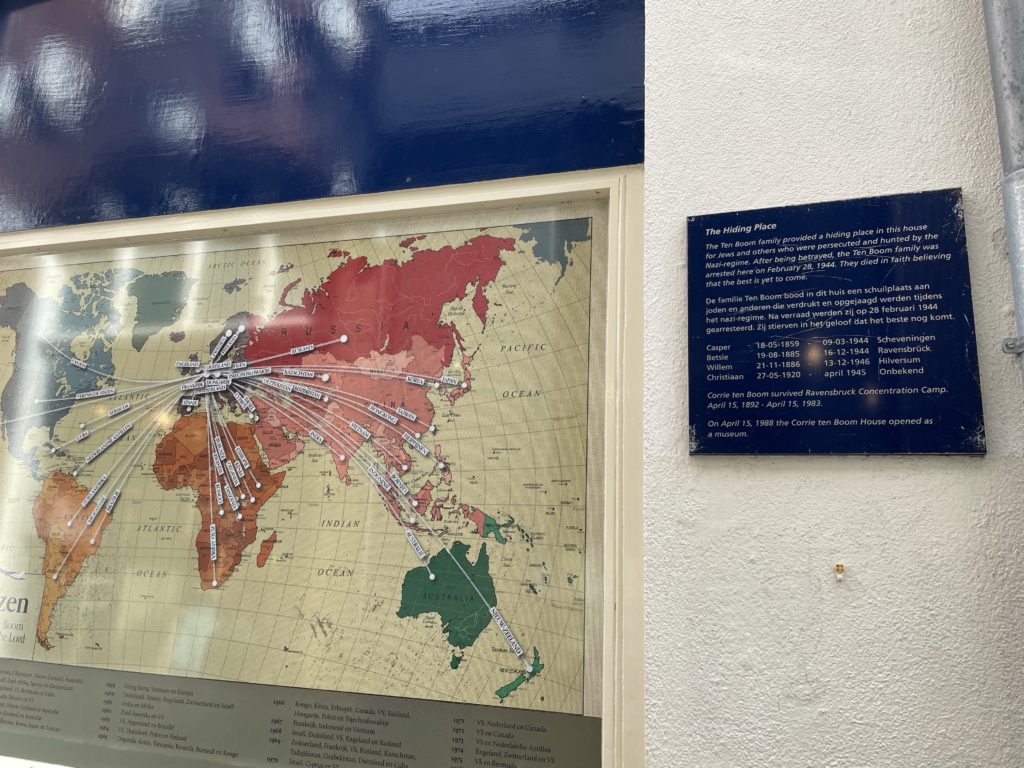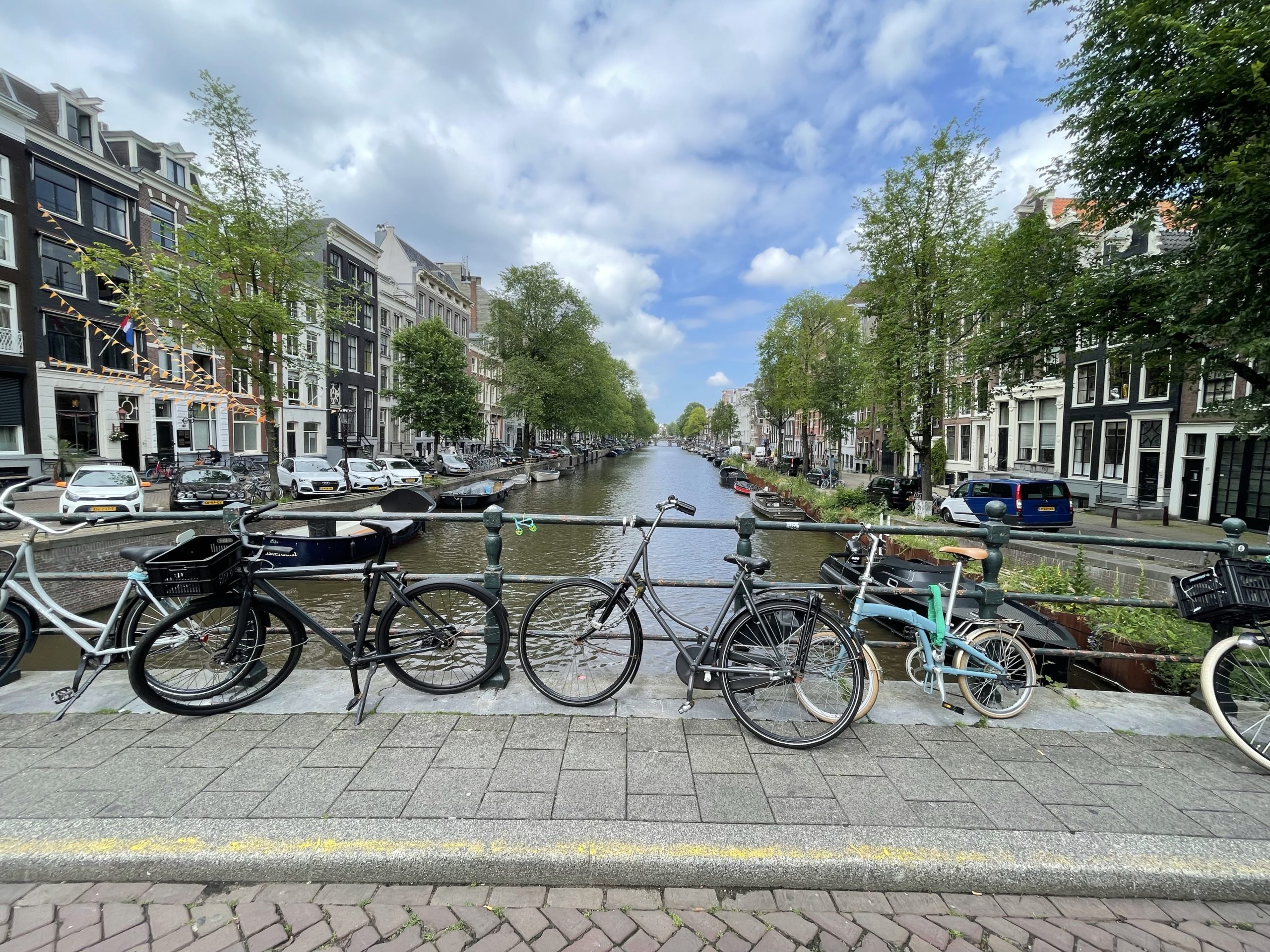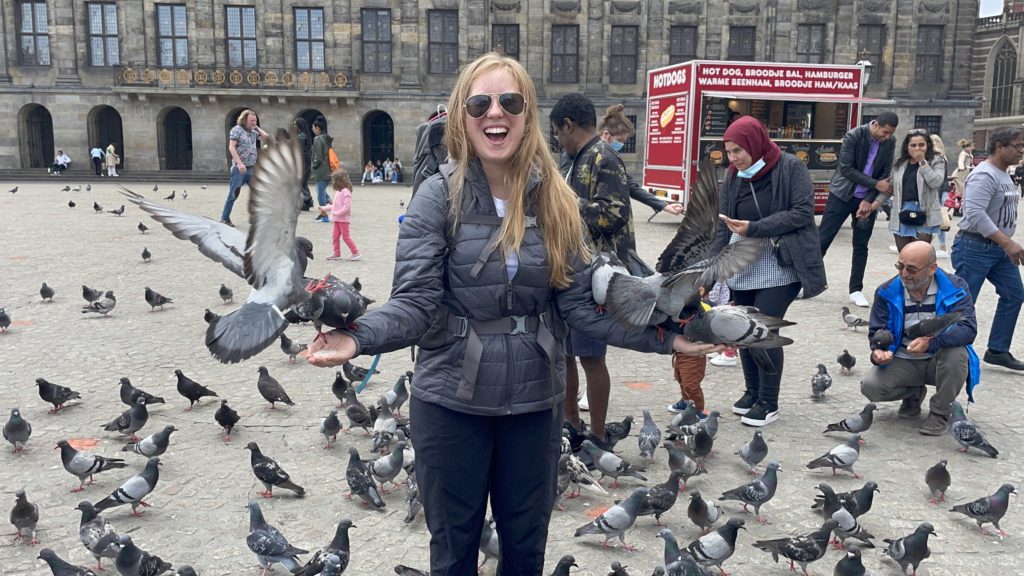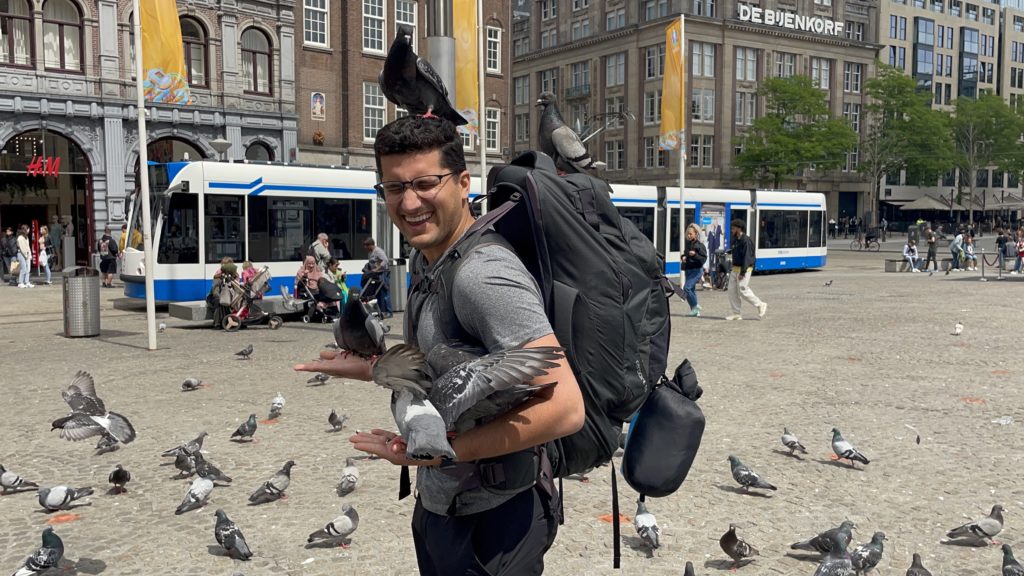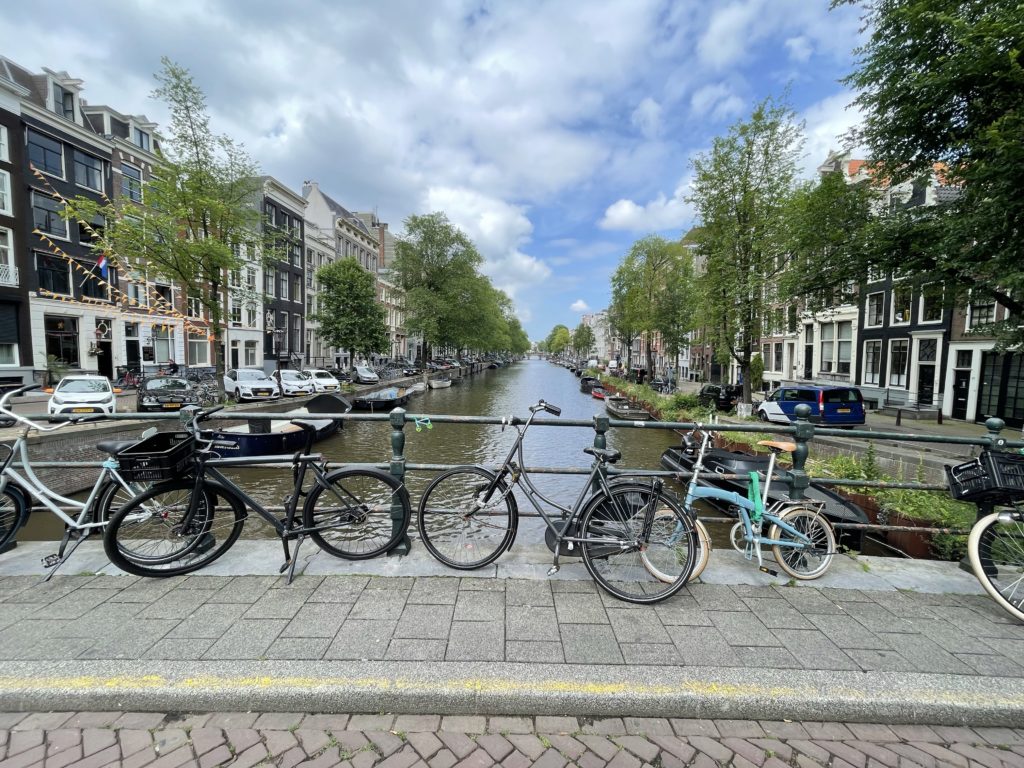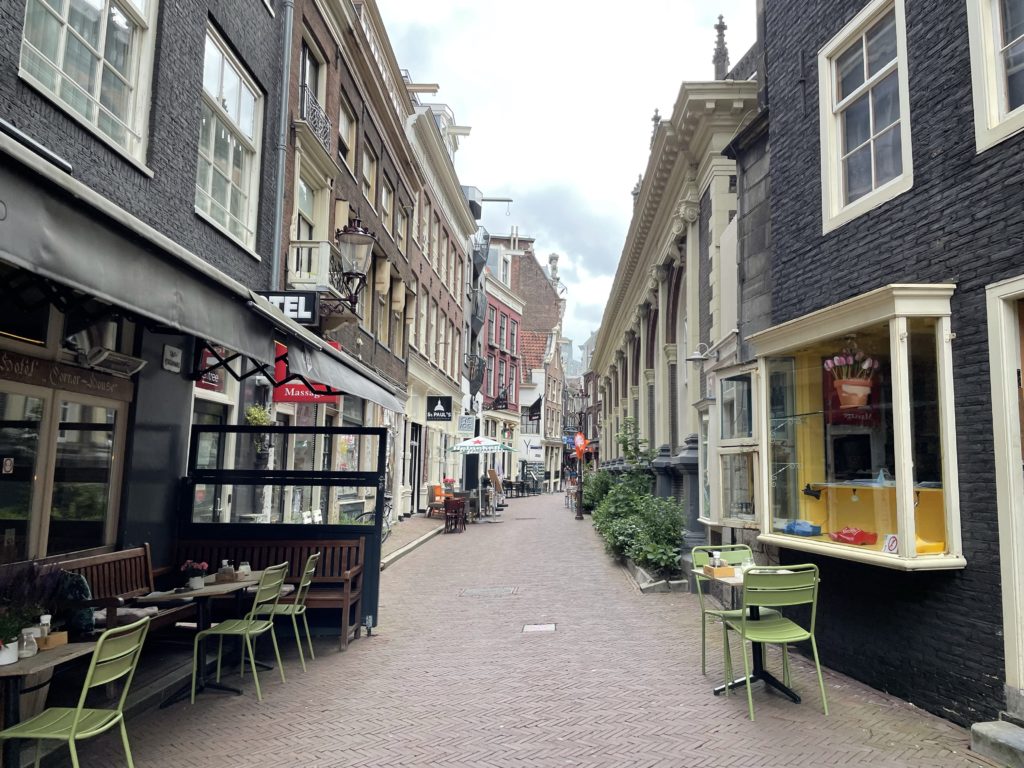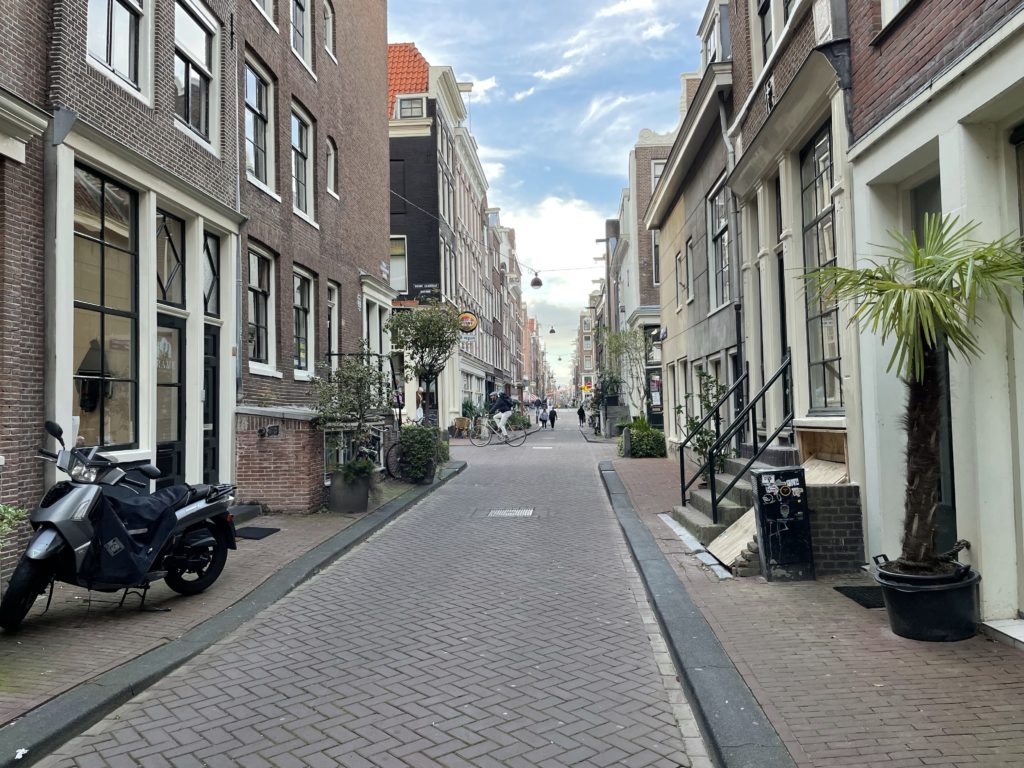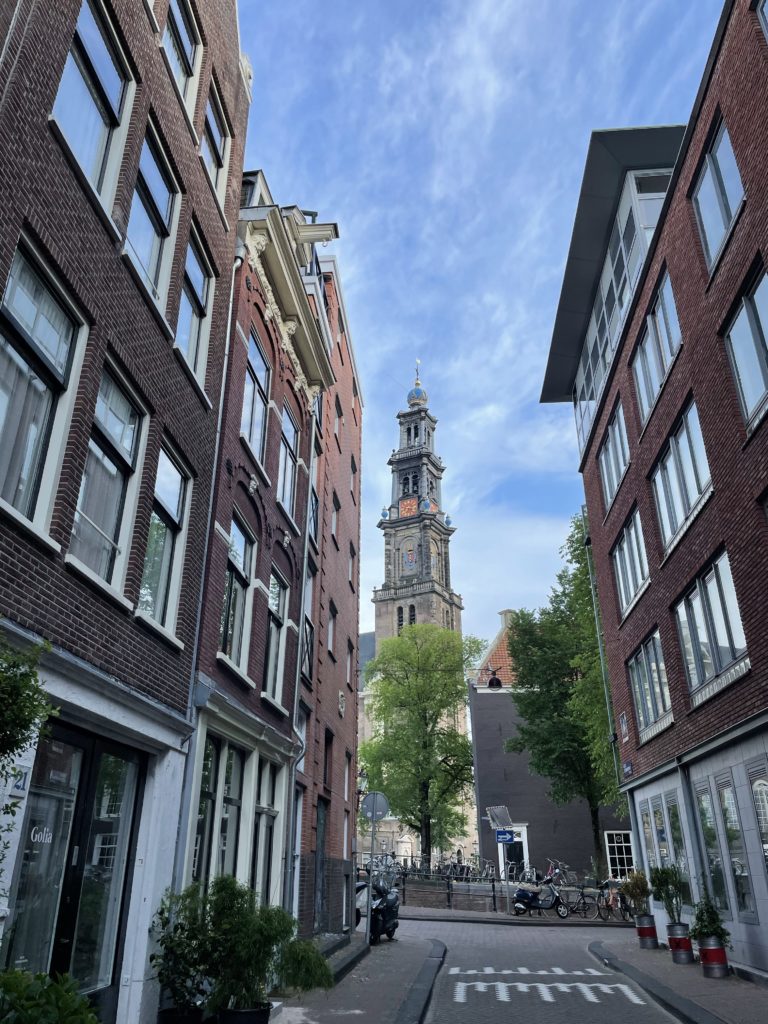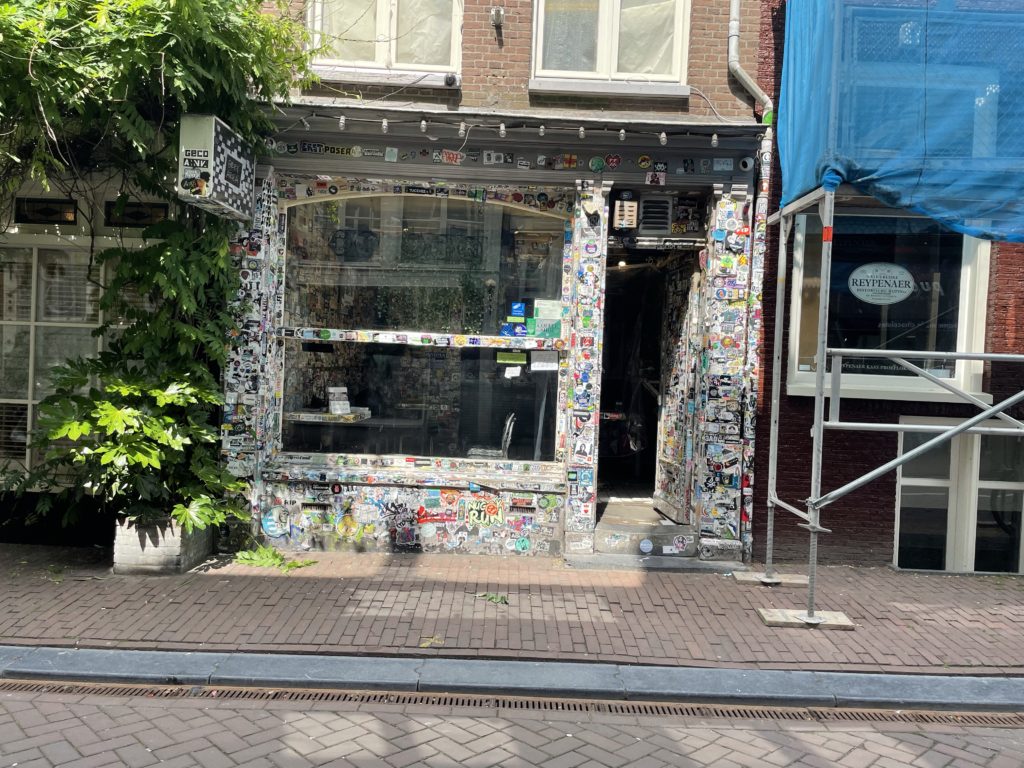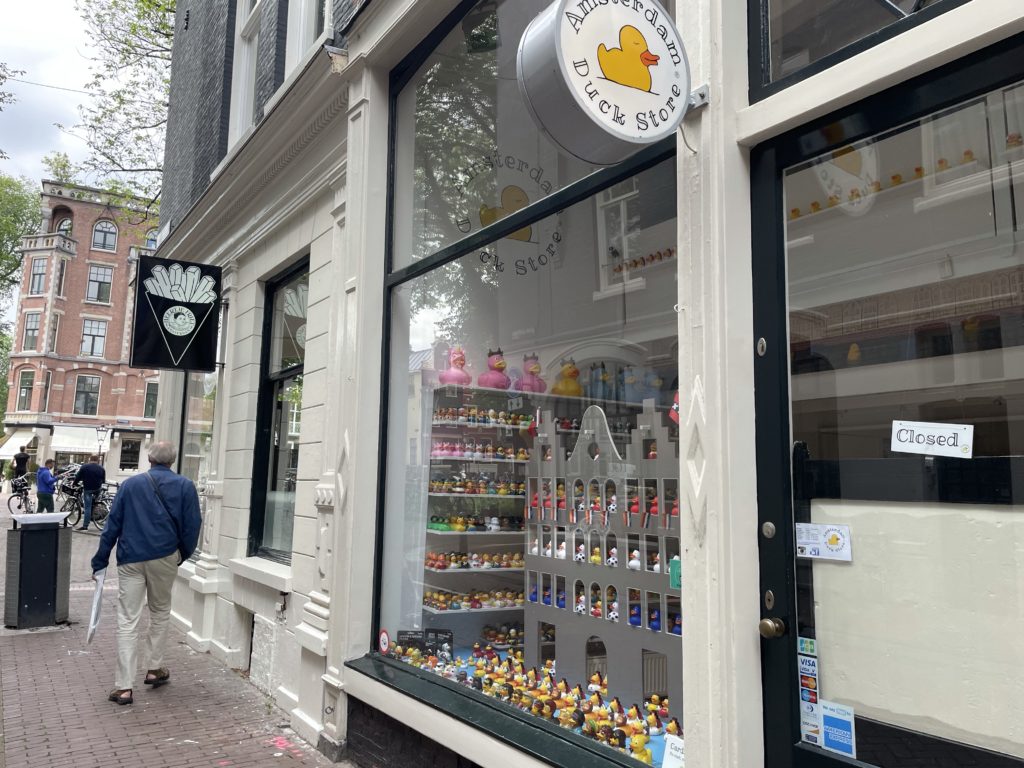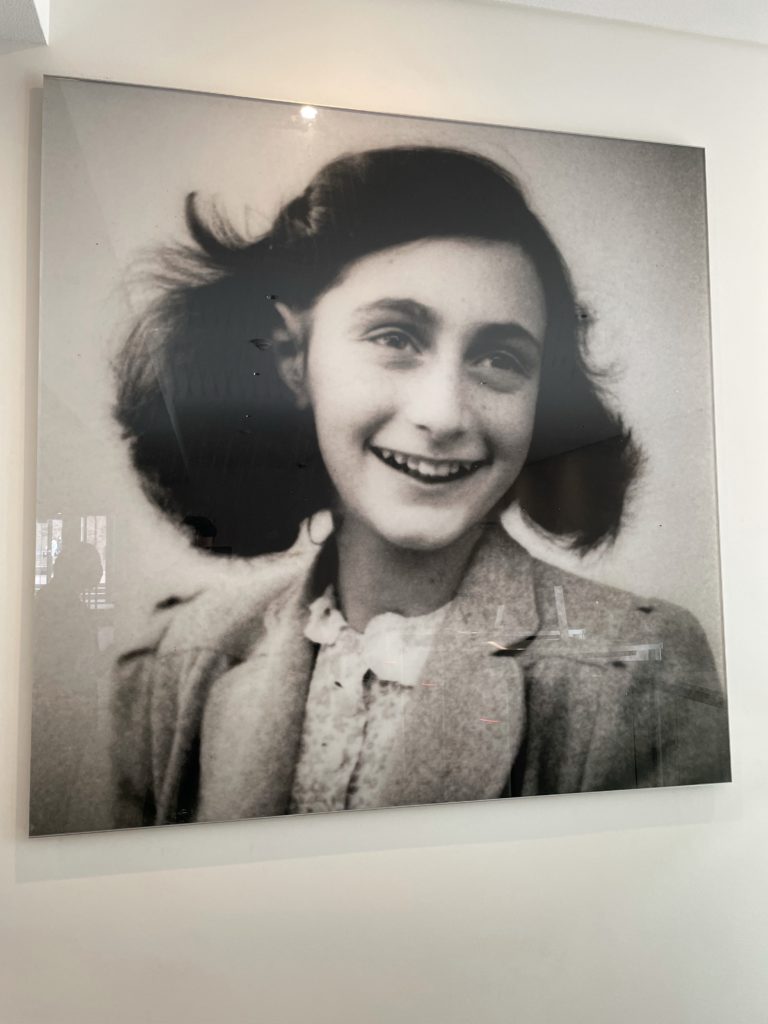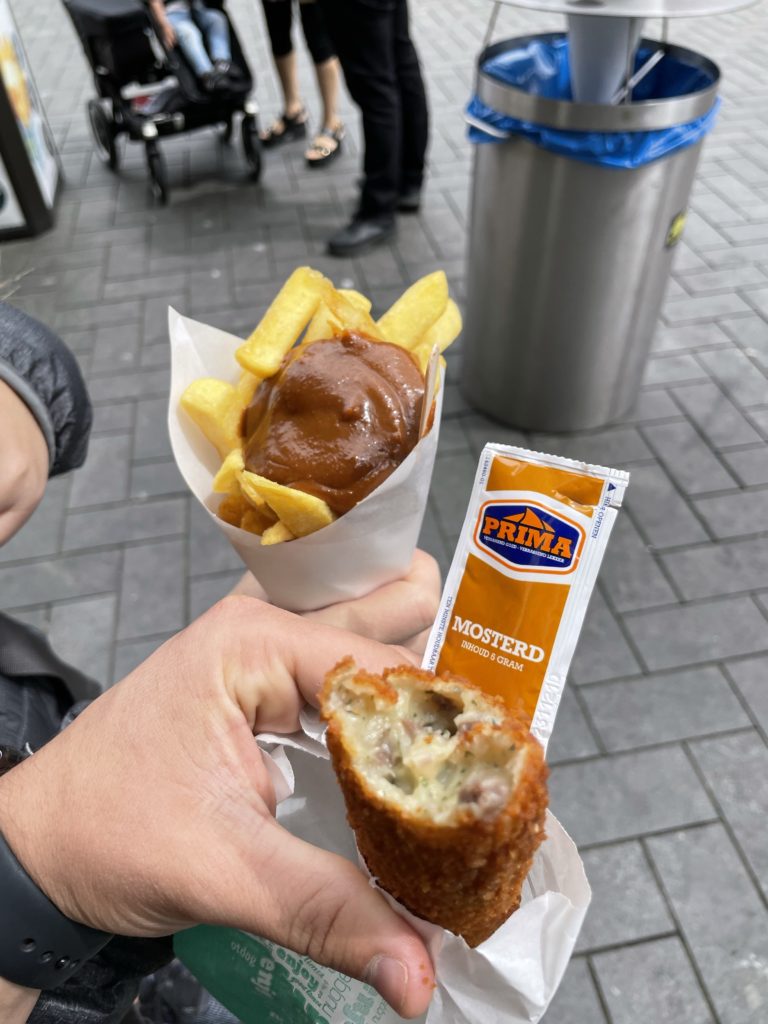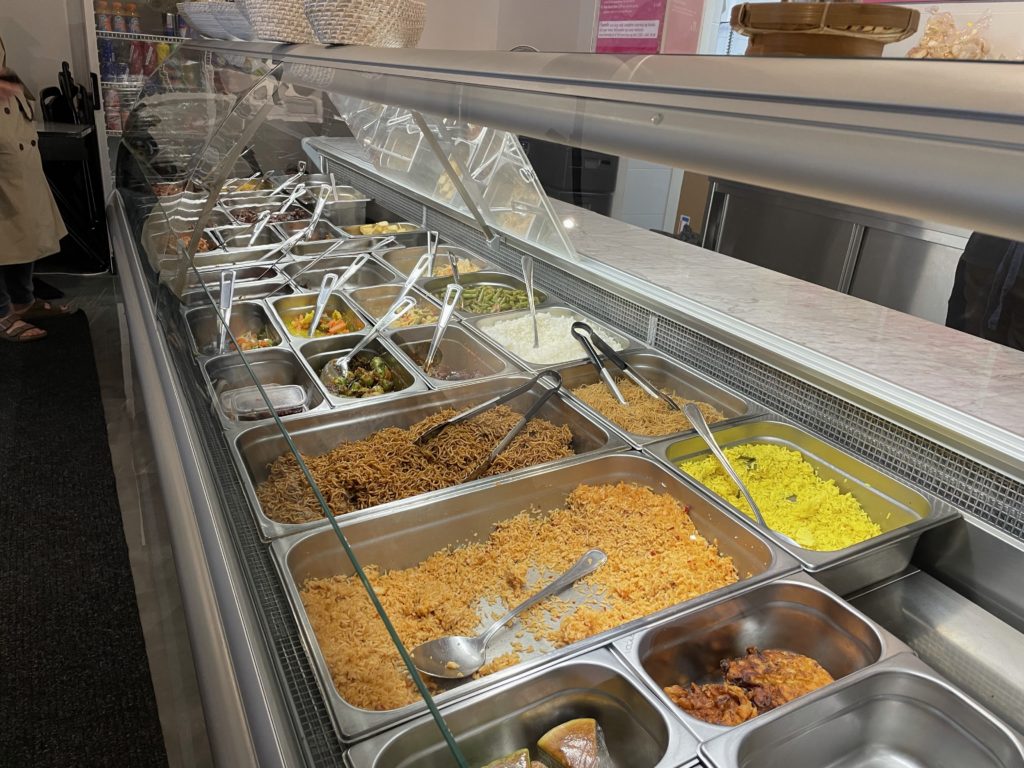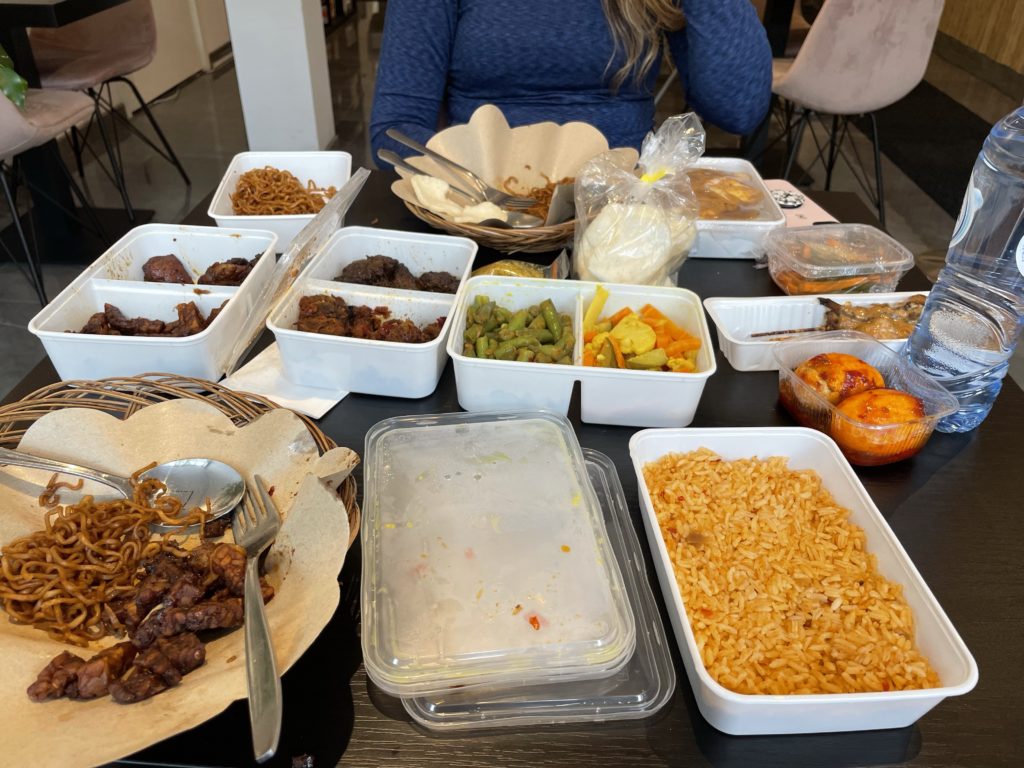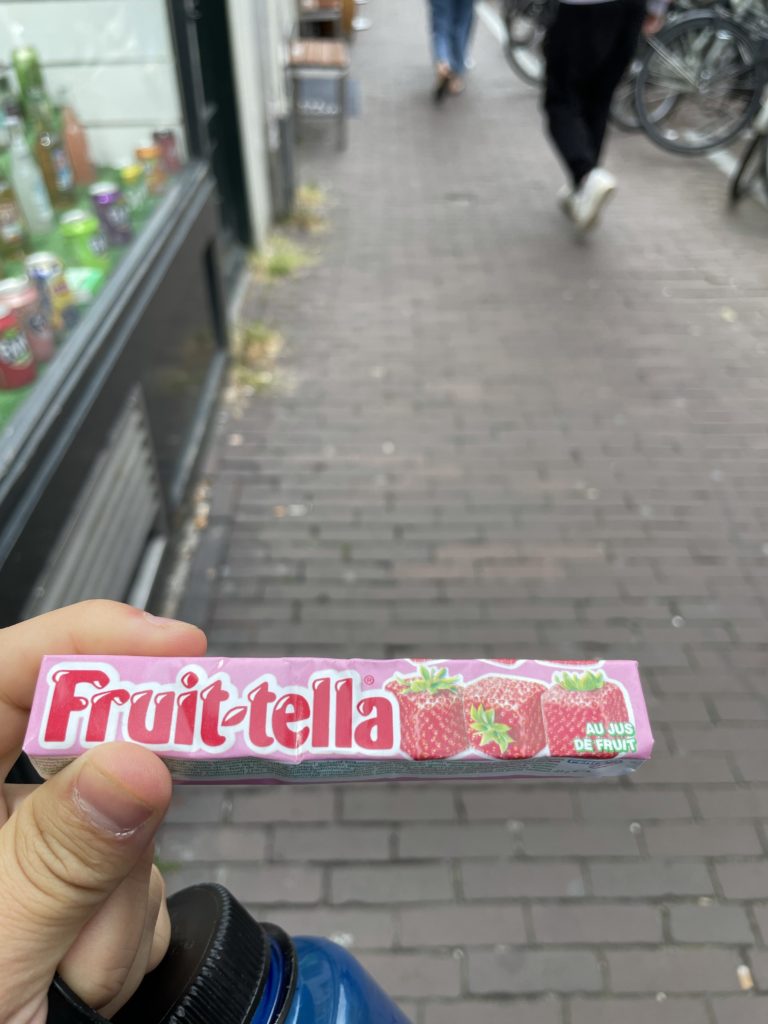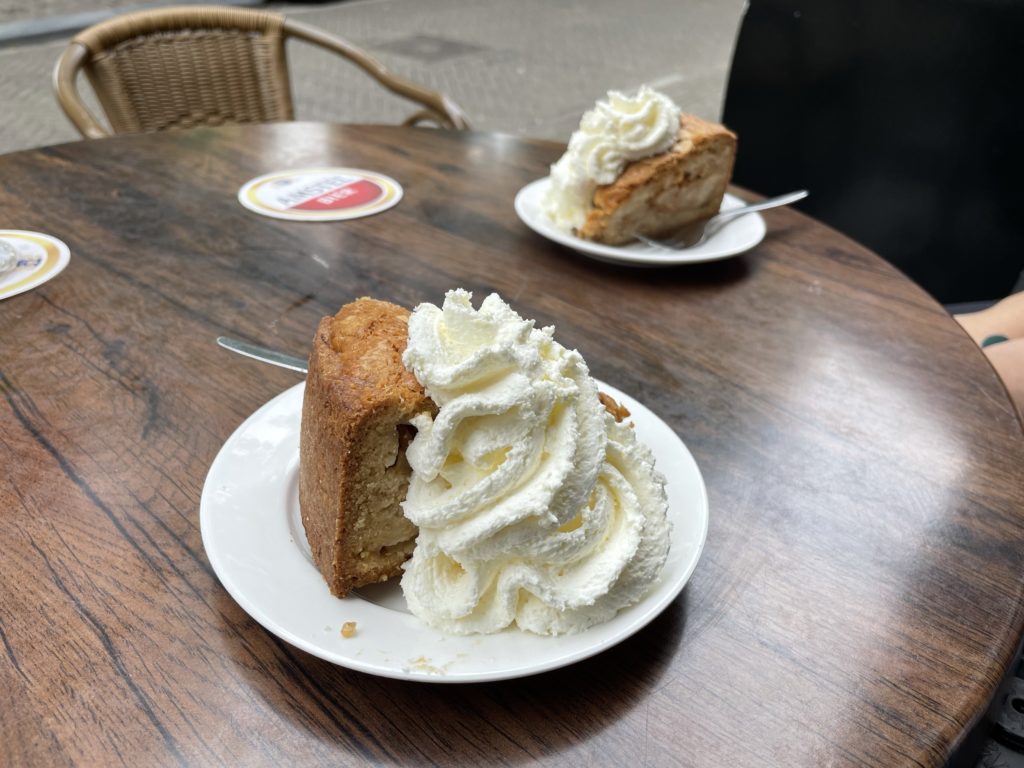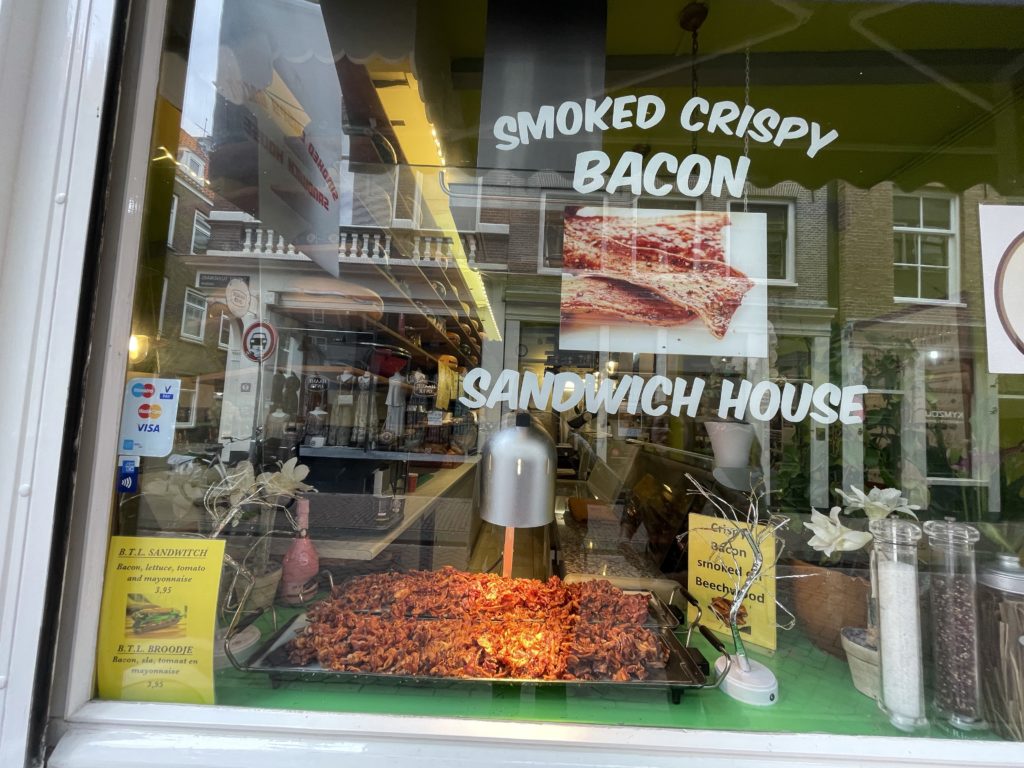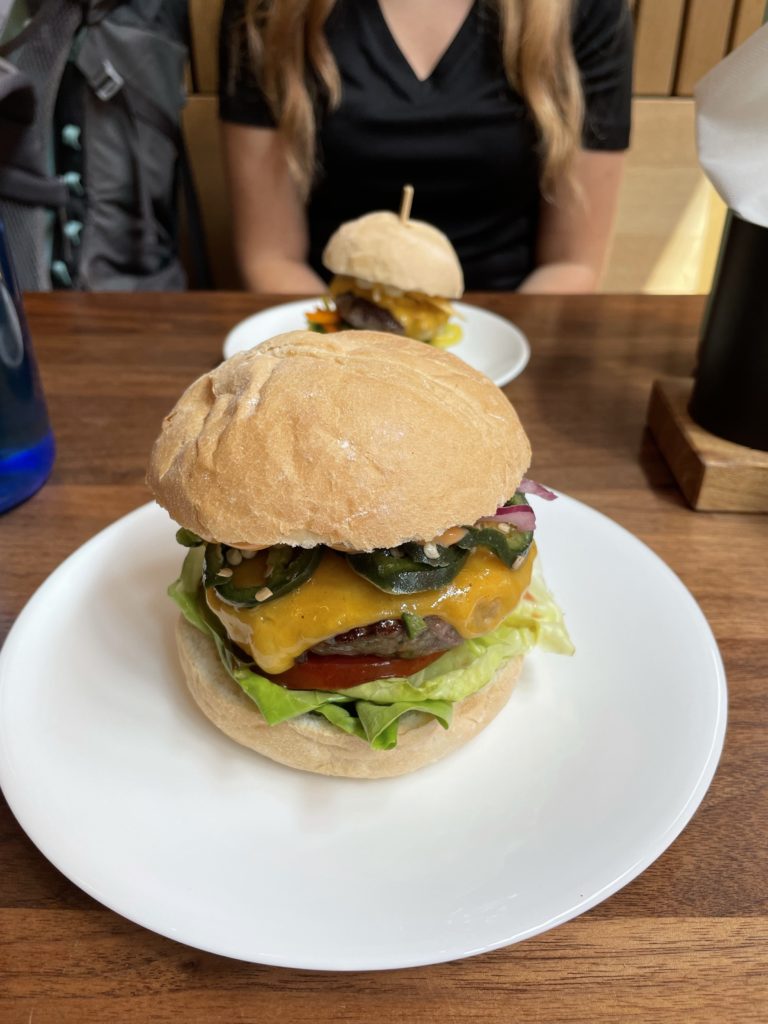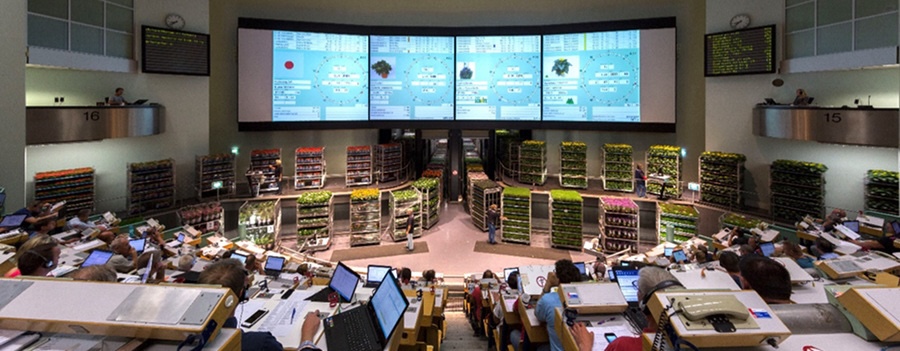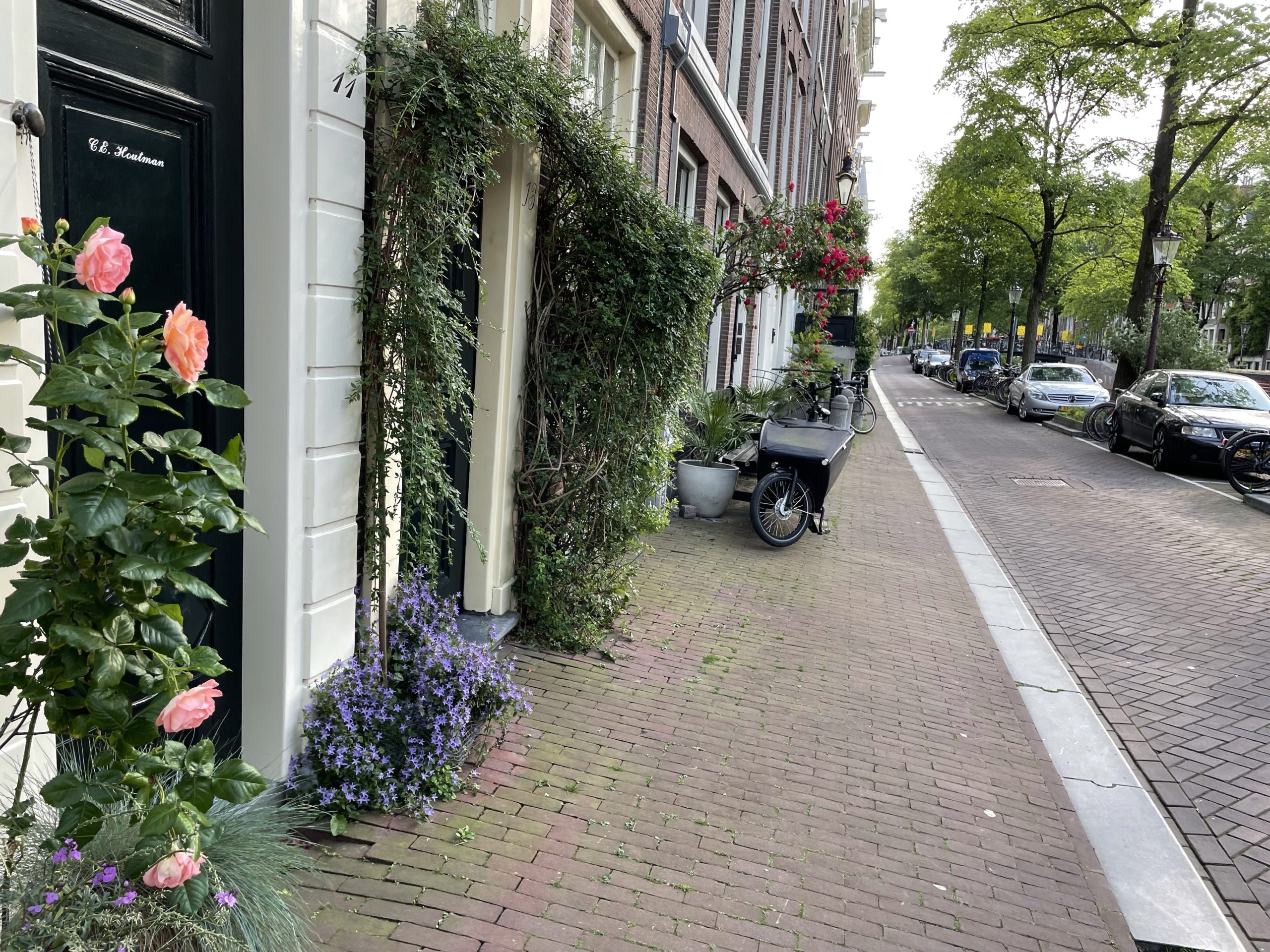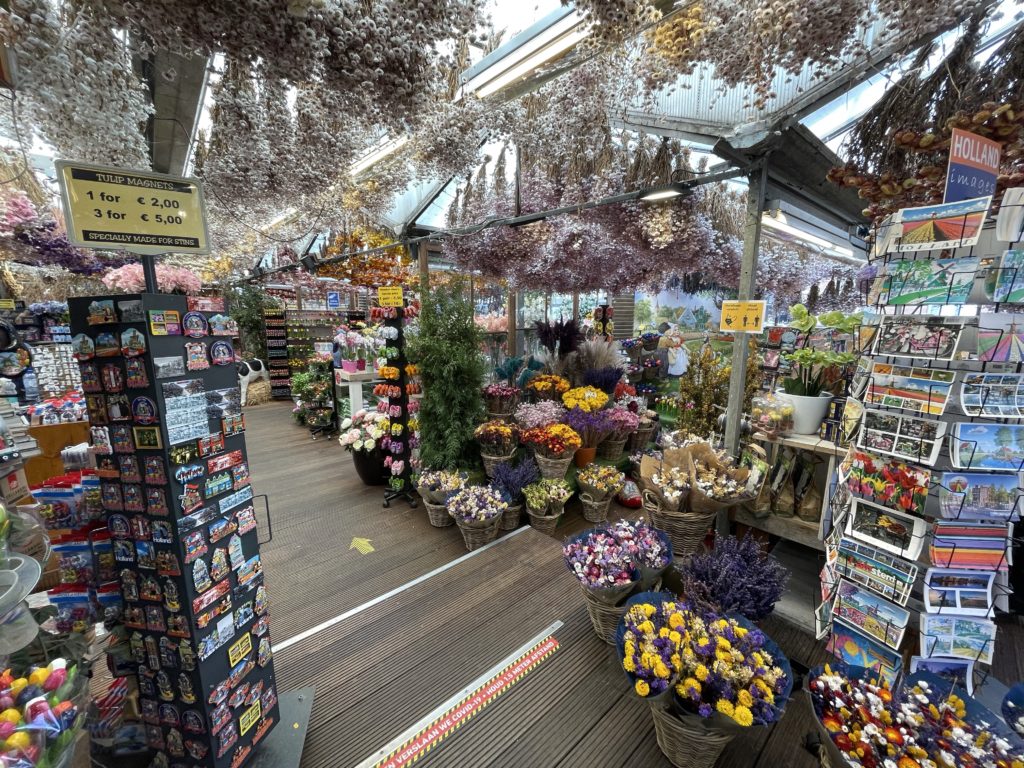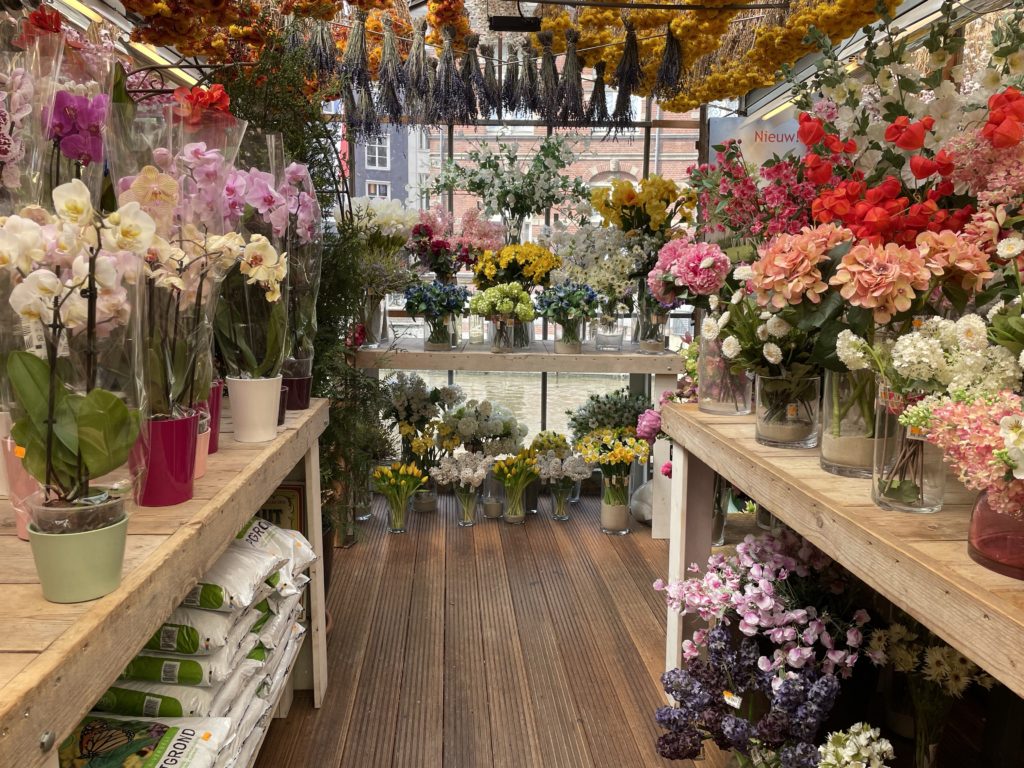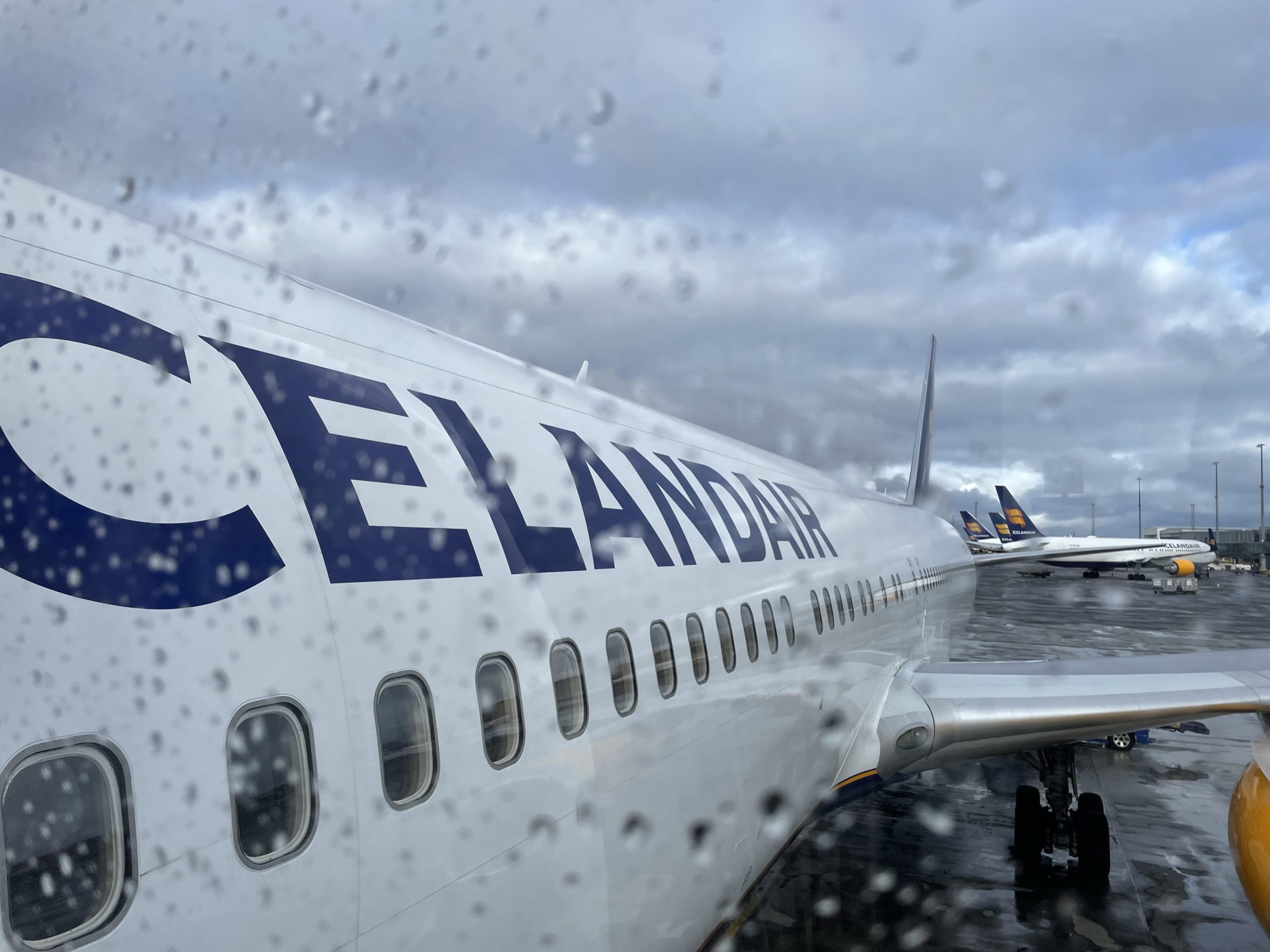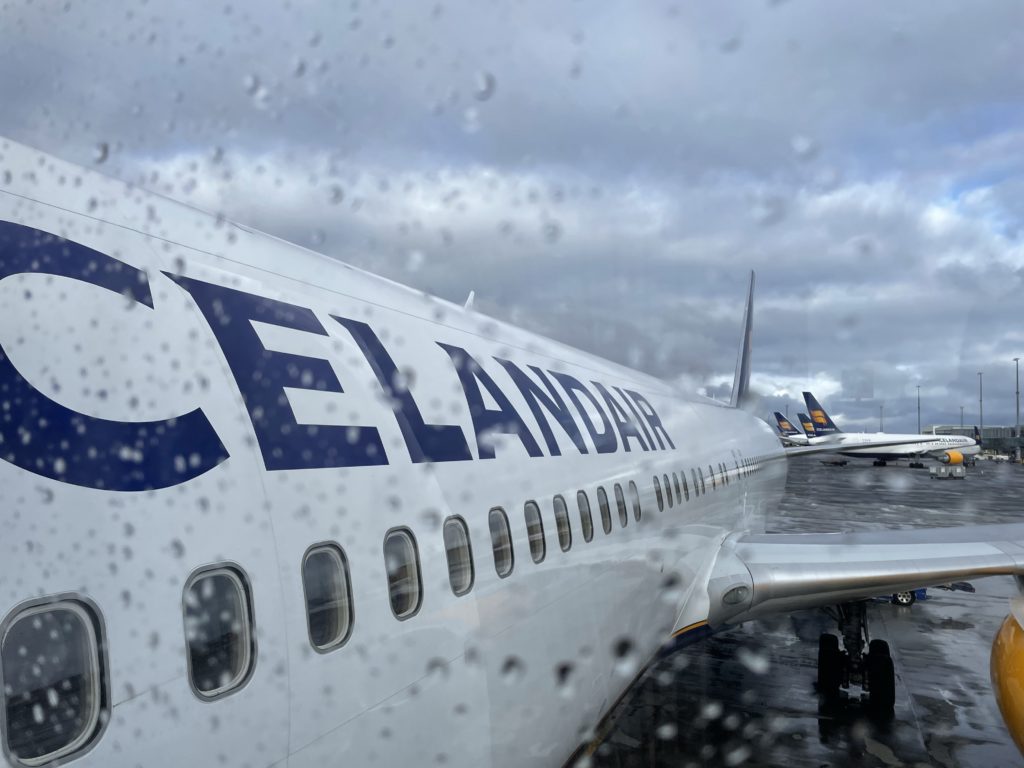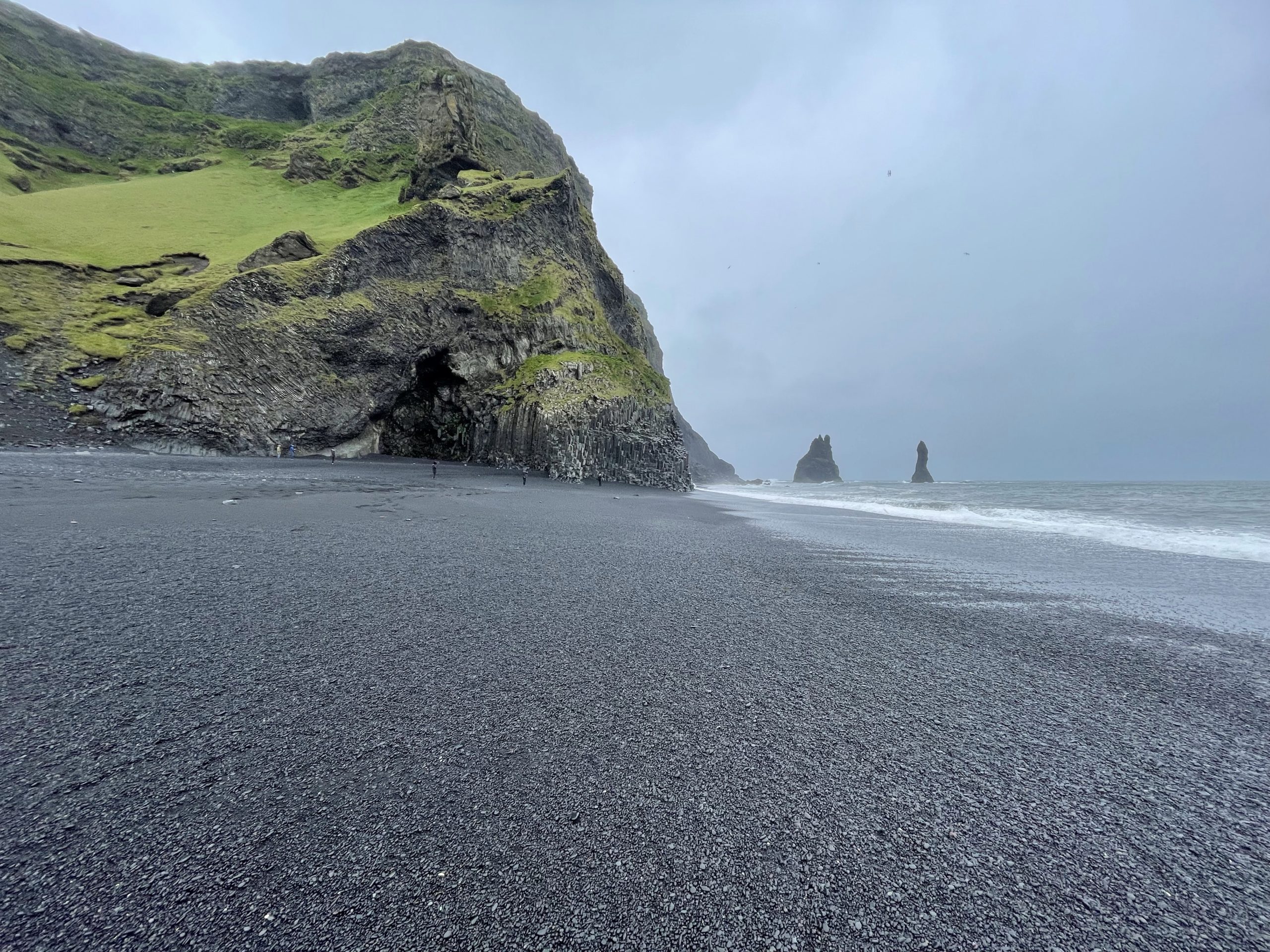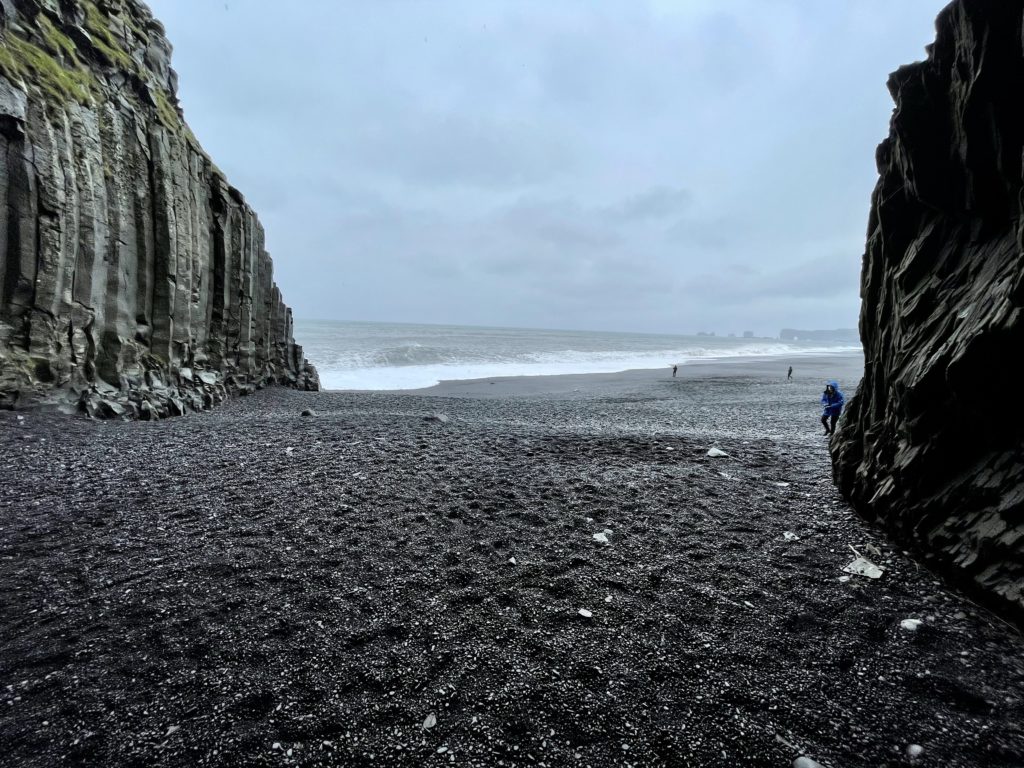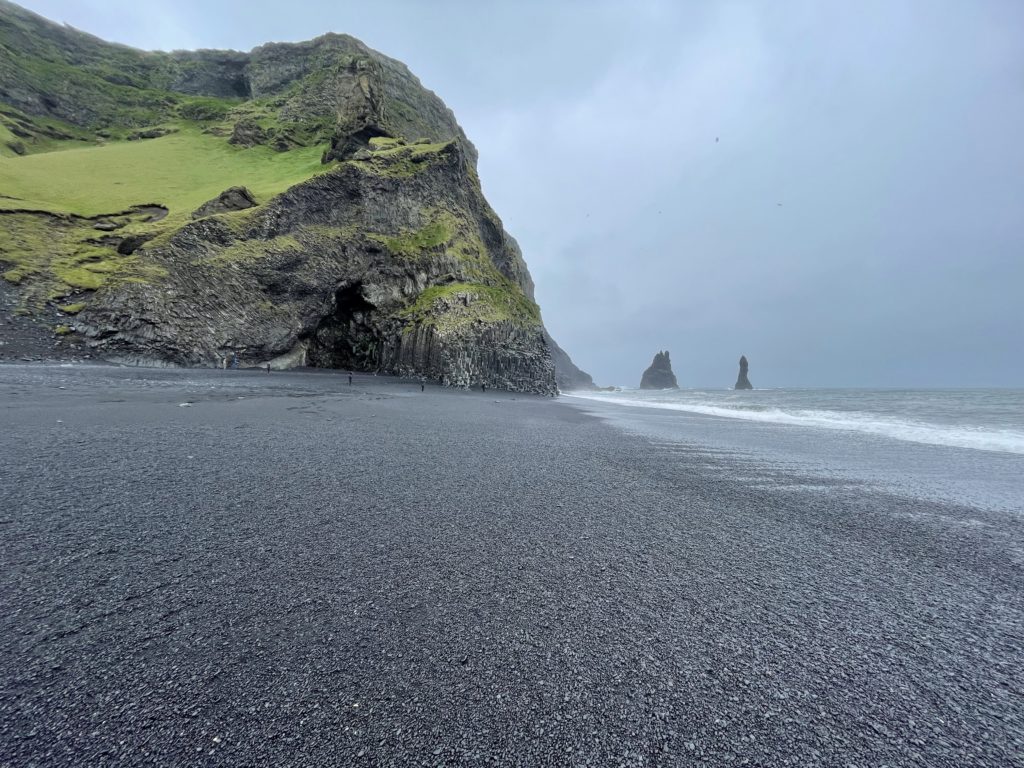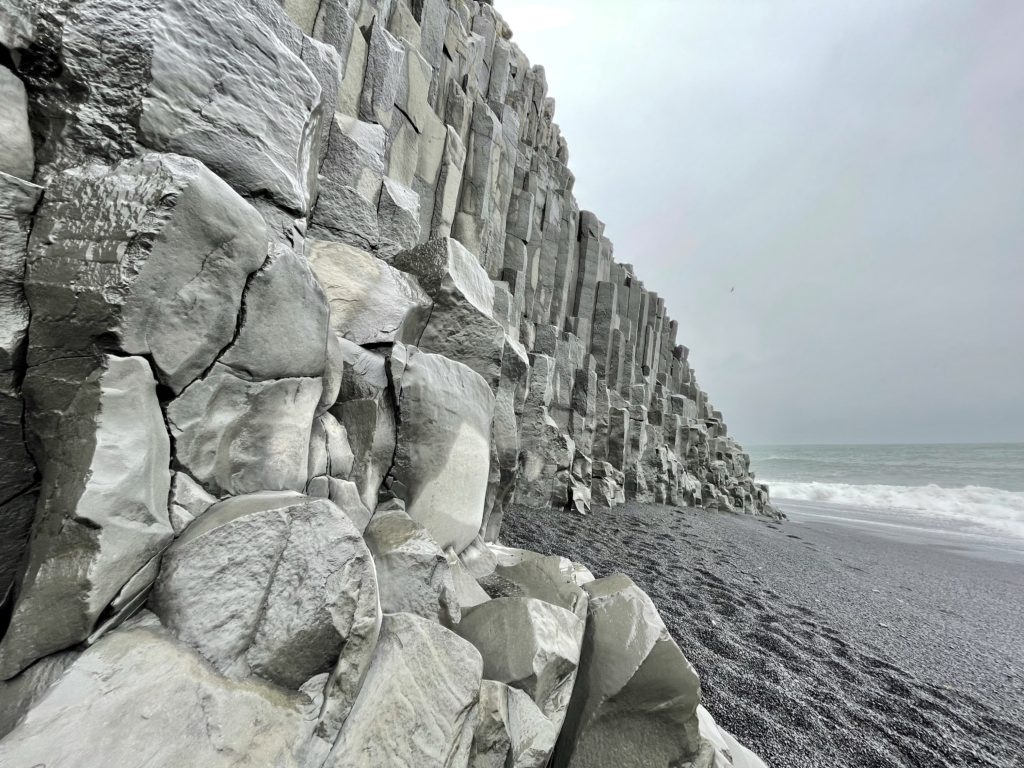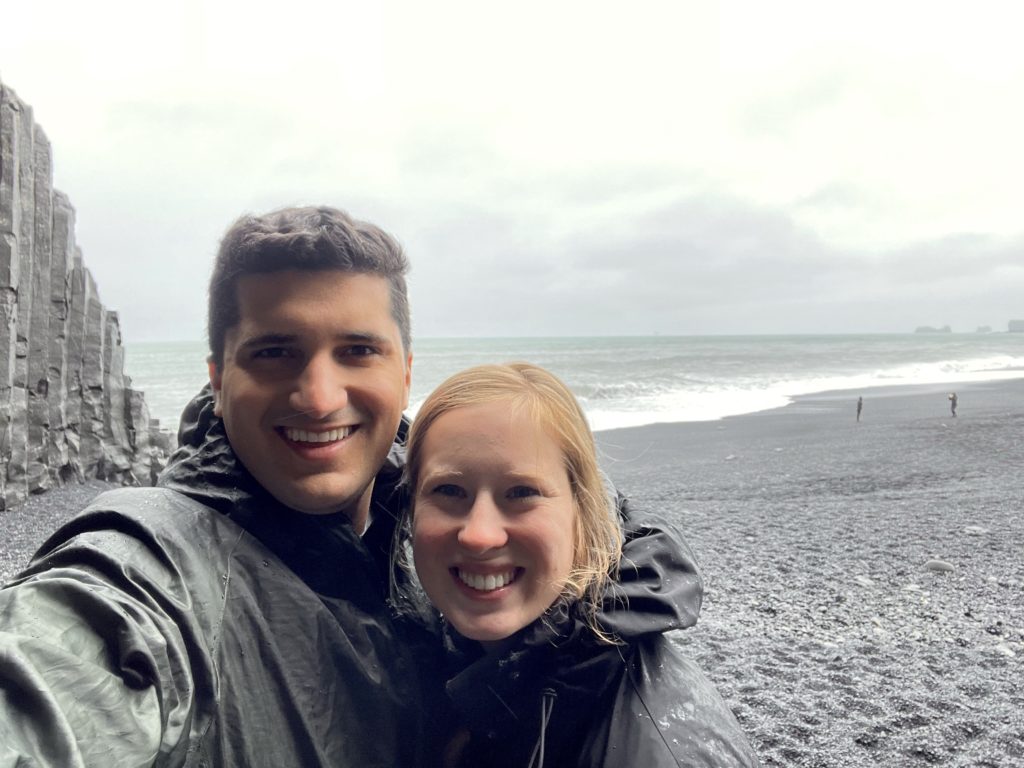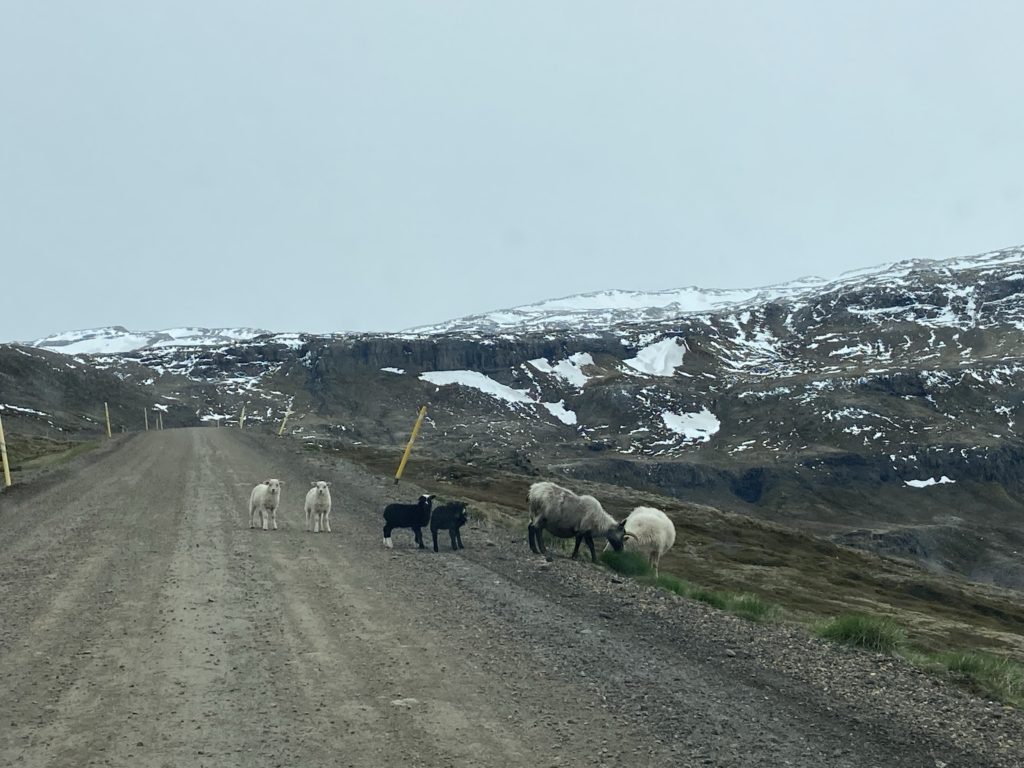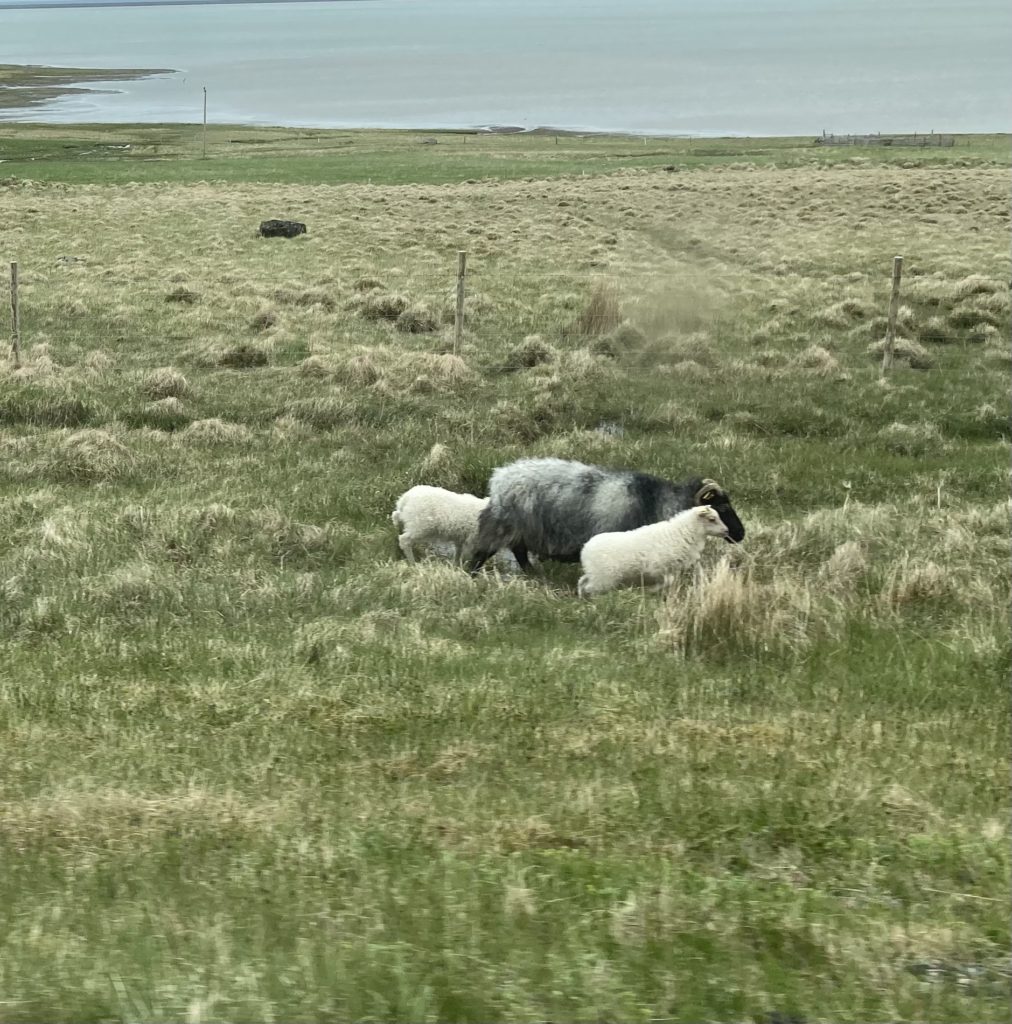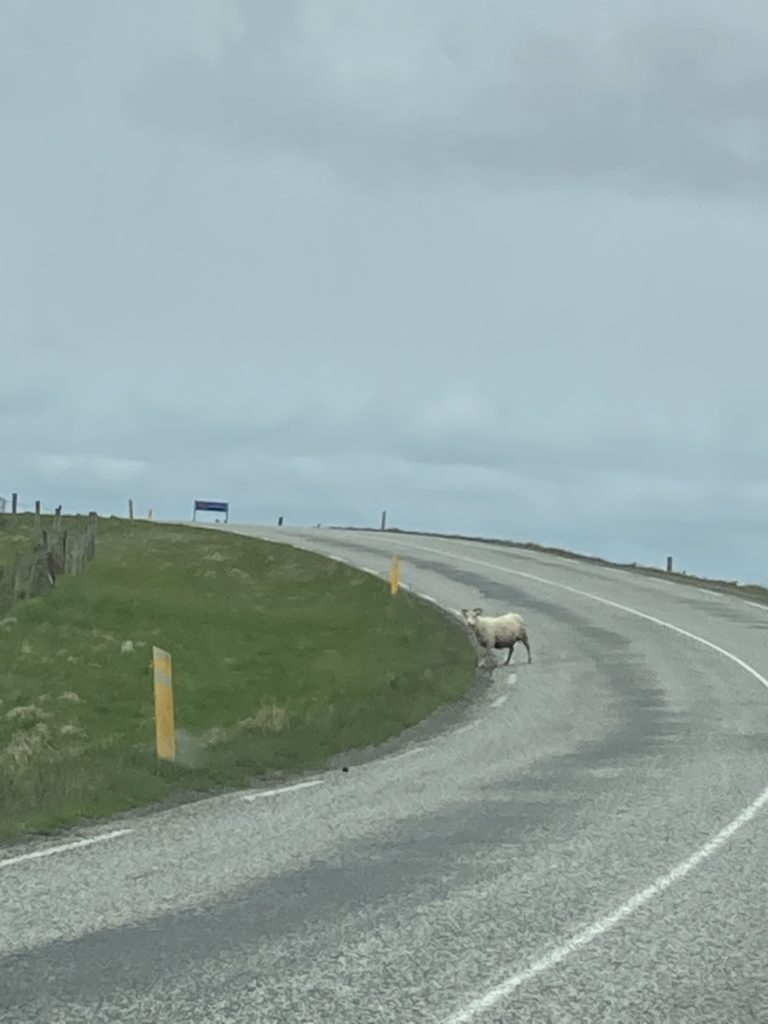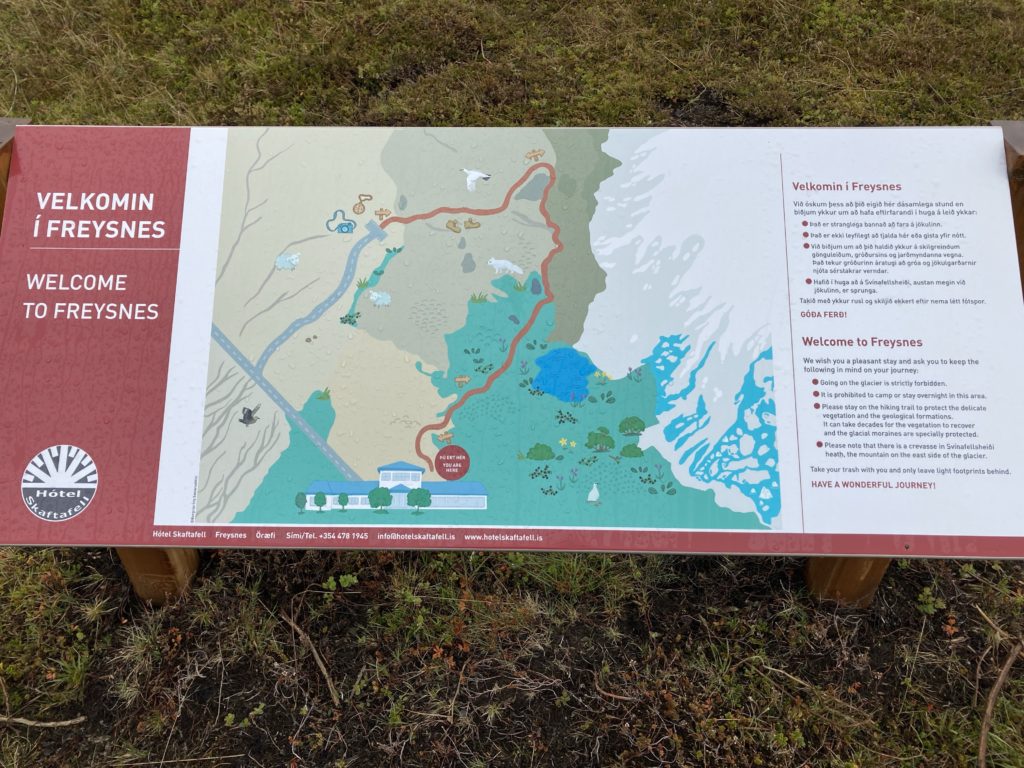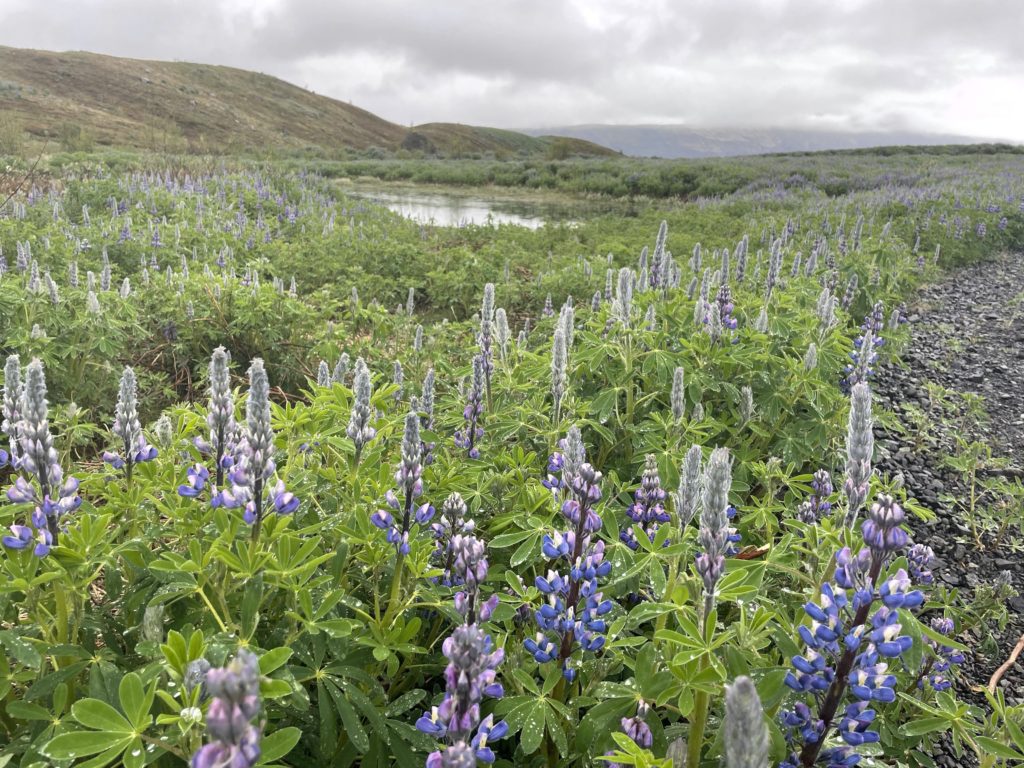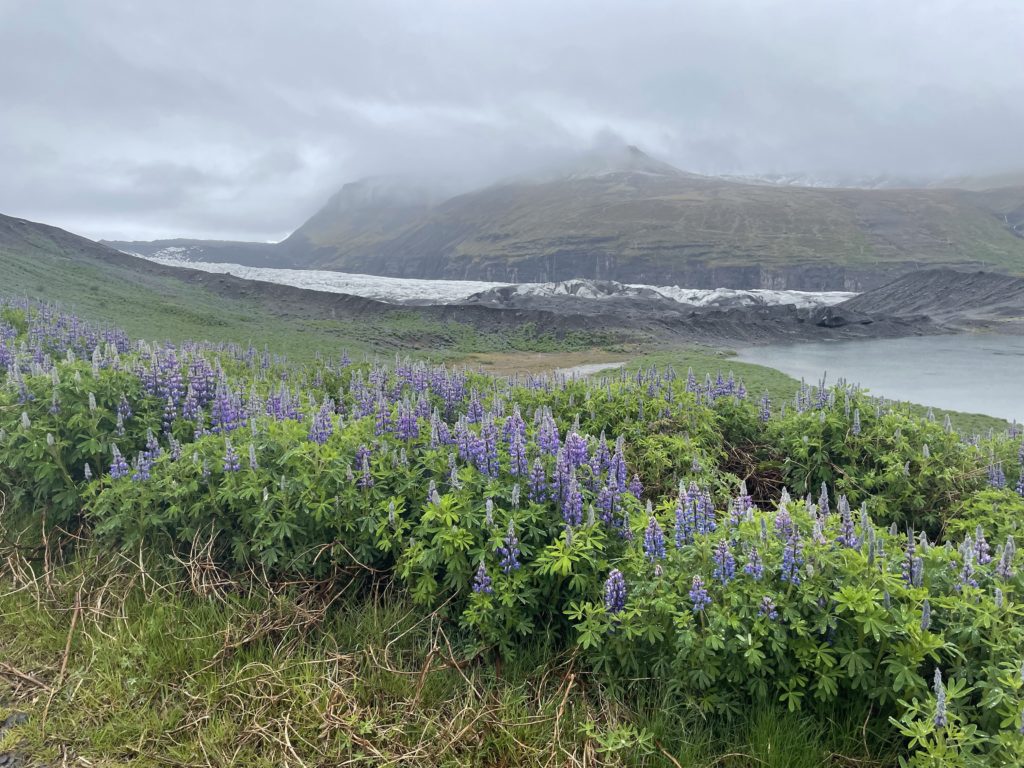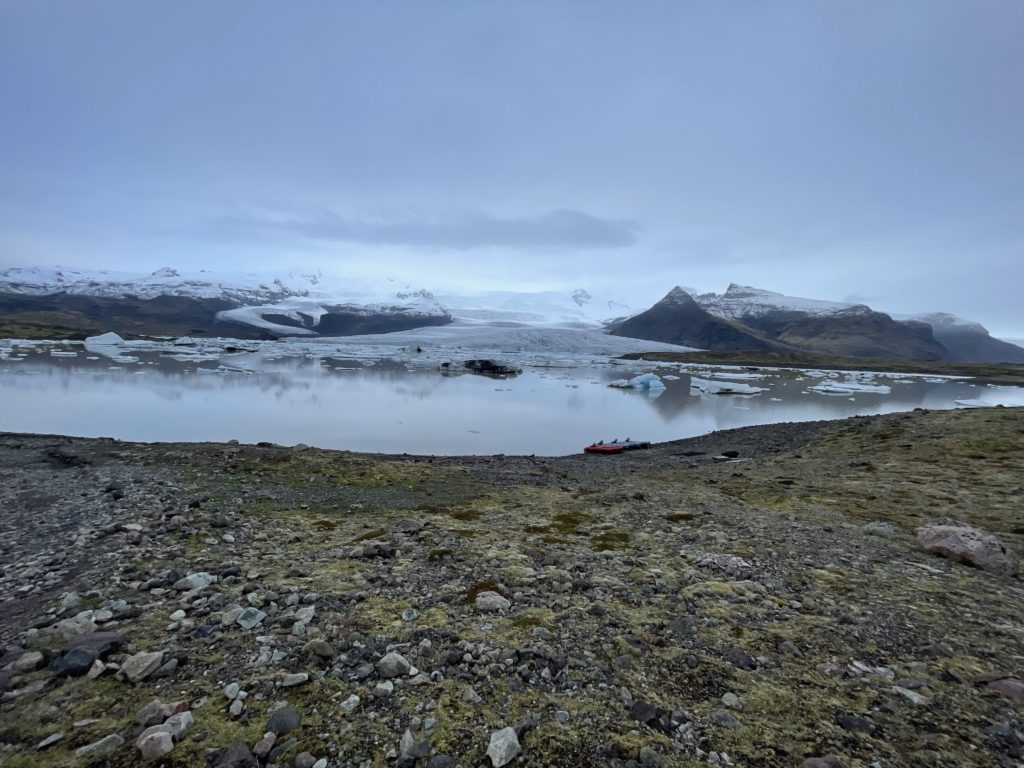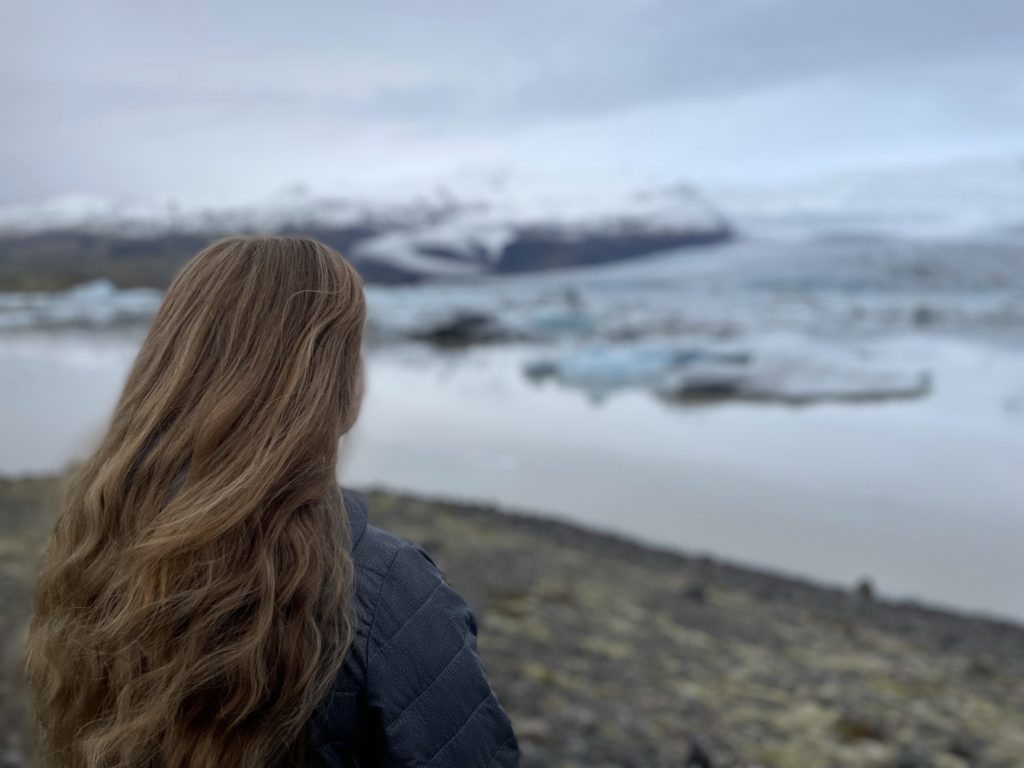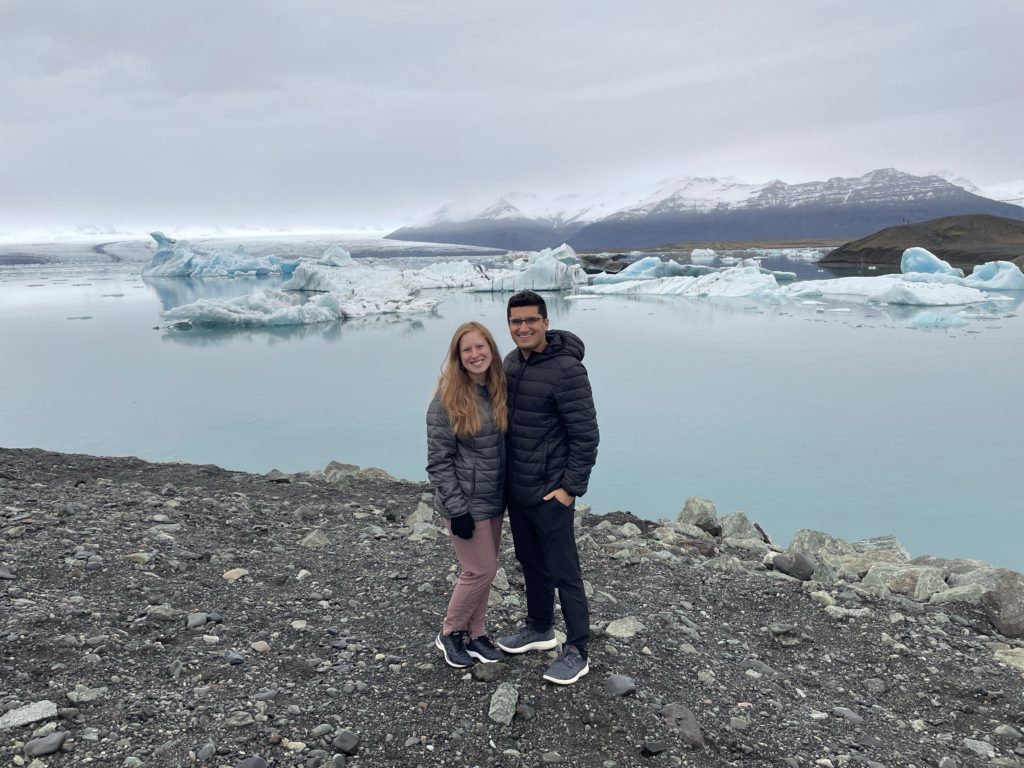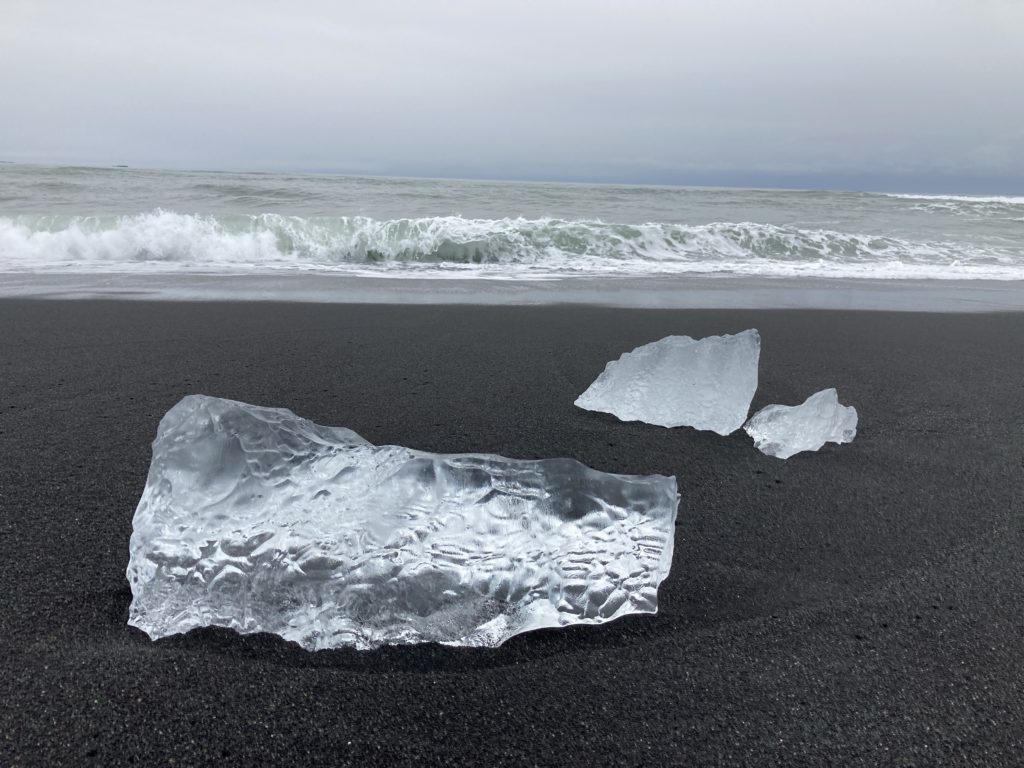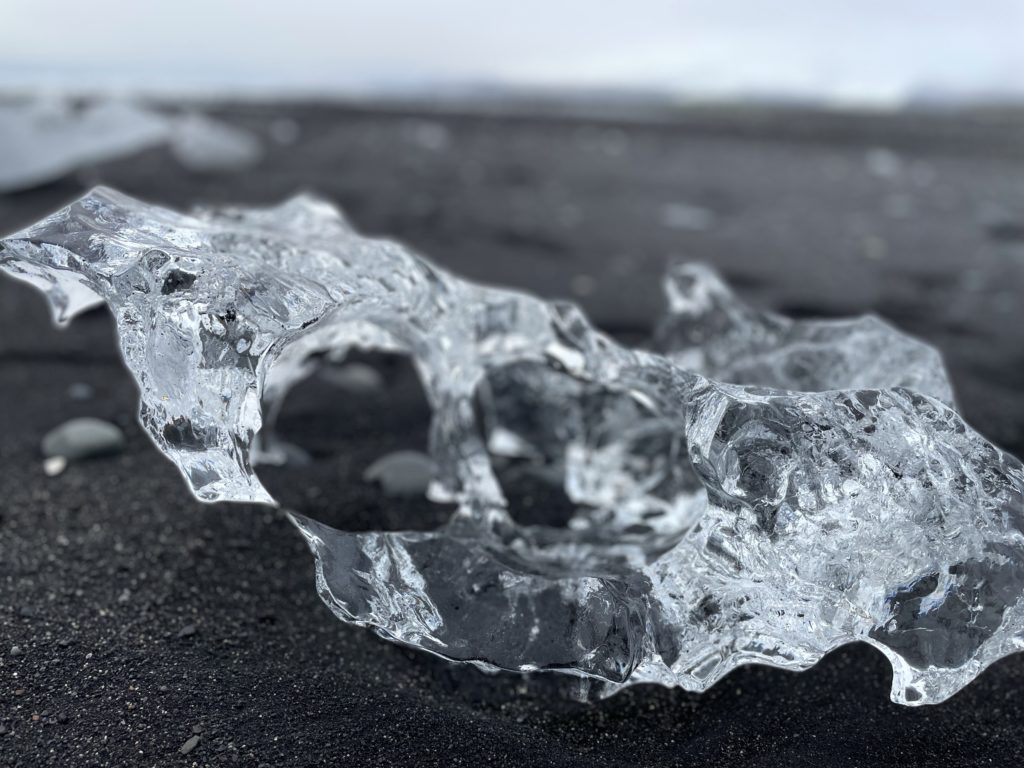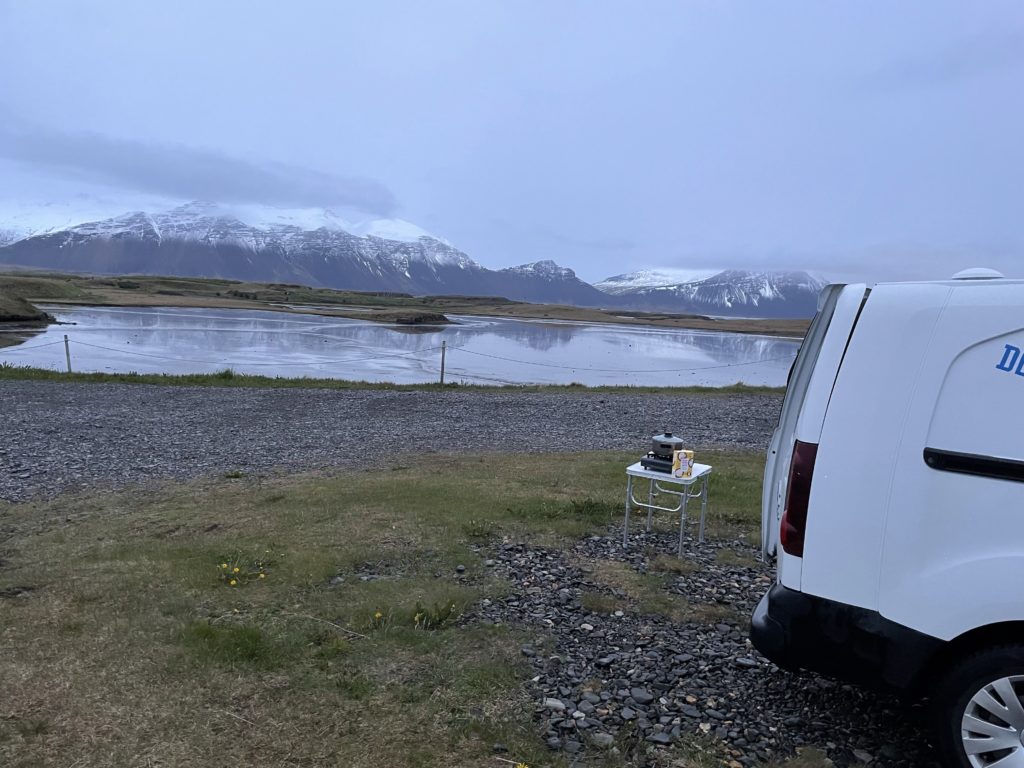June 25-27:
We made it to Belgium! It was just a short train ride away from Gouda to make it to the Belgian border. We connected through Brussels and out to the city of Bruges on the western side of Belgium.
Belgium is one of the newest countries in Europe. Around the same time as the French Revolution, the Belgian Revolution in 1831 resulted in the southern half of The Netherlands to secede into its own, independent country. The Kingdom of The Netherlands finally recognized its sovereignty in 1839.
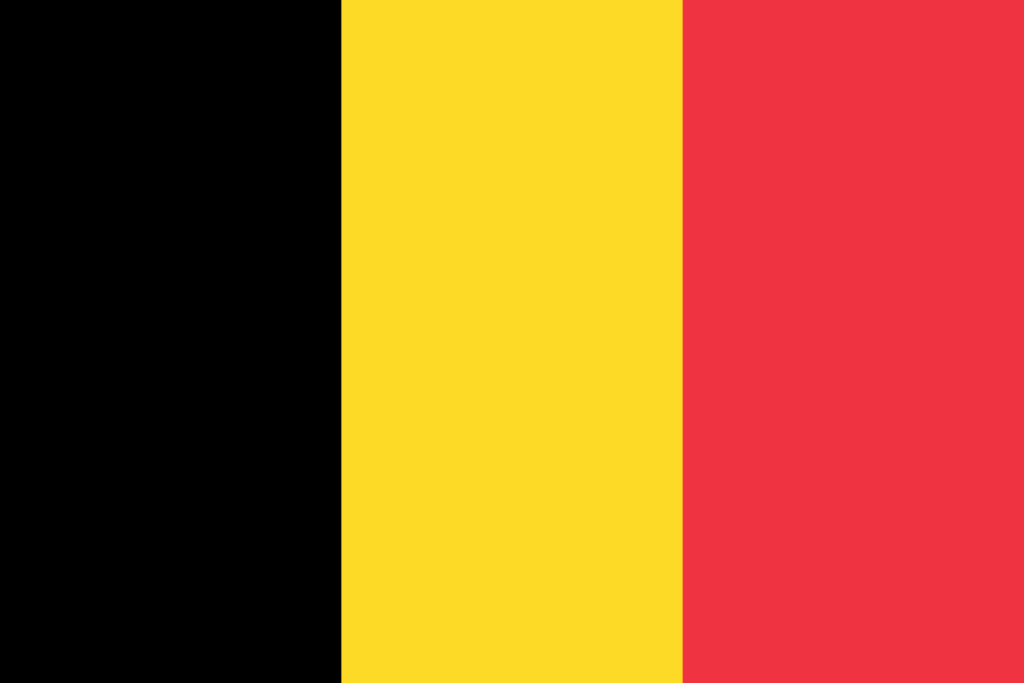
Today, the country of Belgium is a fascinating mix of cultures, heritages, and languages. There are 3 national languages: Dutch, French, and German. The people of the capital city of Brussels are pushing to make English an official language as well. As such, most folks (including all school children by the age of 14) typically become at the very least conversational in 4 languages.
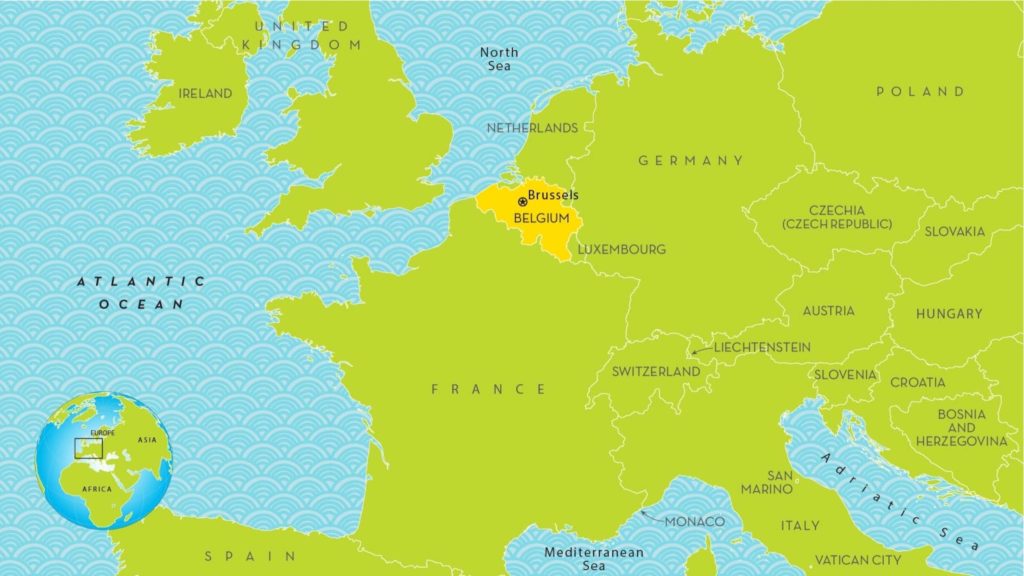
The regions of Belgium see different languages used predominantly as well. For example, in the southern regions of Belgium, French dominates public discourse. In the northern half of the country, including where we stayed in Bruges, a Flemish variation of Dutch dominates. We noticed that signs here often showed Dutch, then French, then German, then English. As such, the historic plaques are necessarily huge!
Bruges, Belgium is one of the most historically preserved cities in the country. At one point in the 13th/14th centuries, it was the wealthiest city in Europe! Echoes of that era remain today.

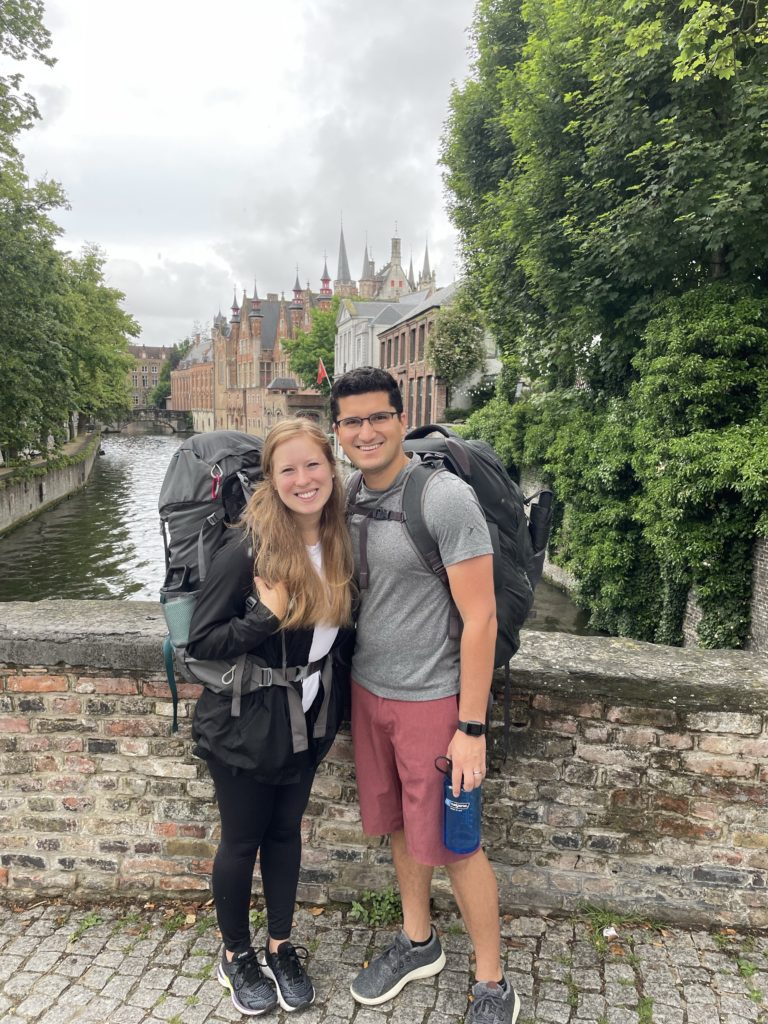
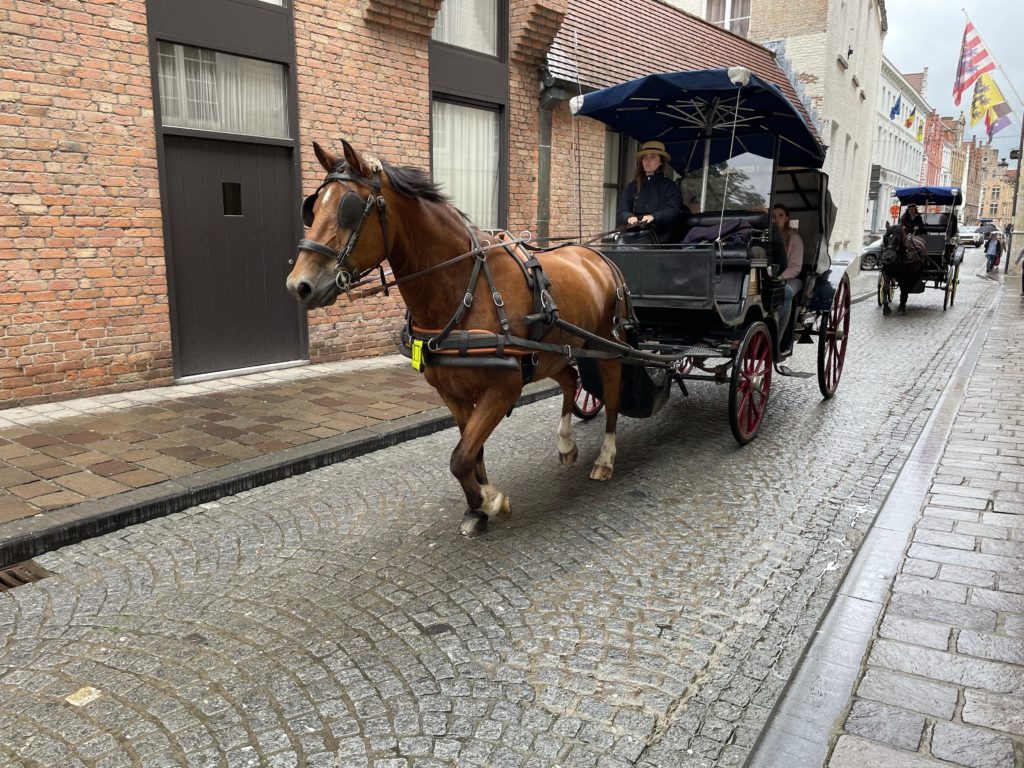
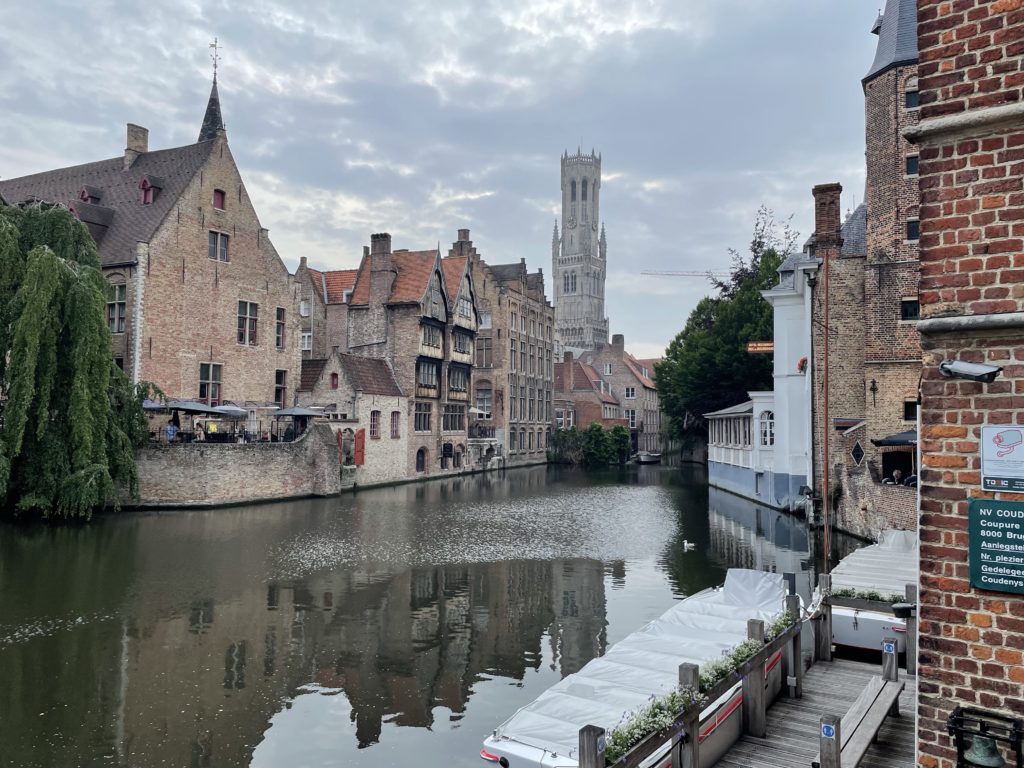
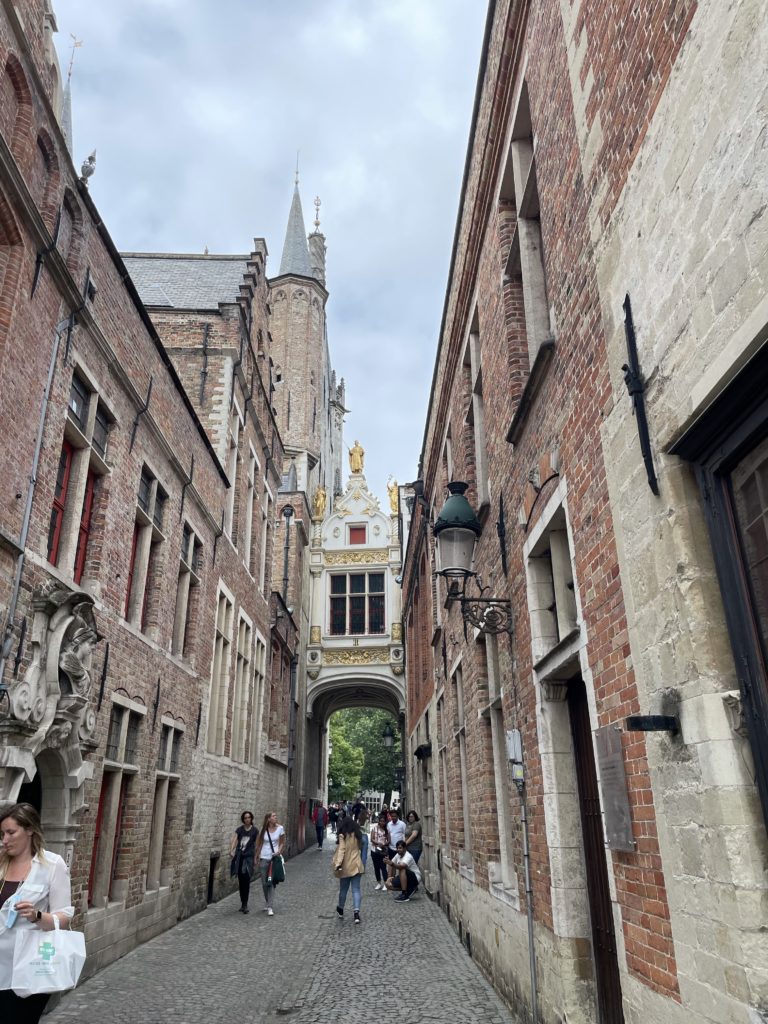
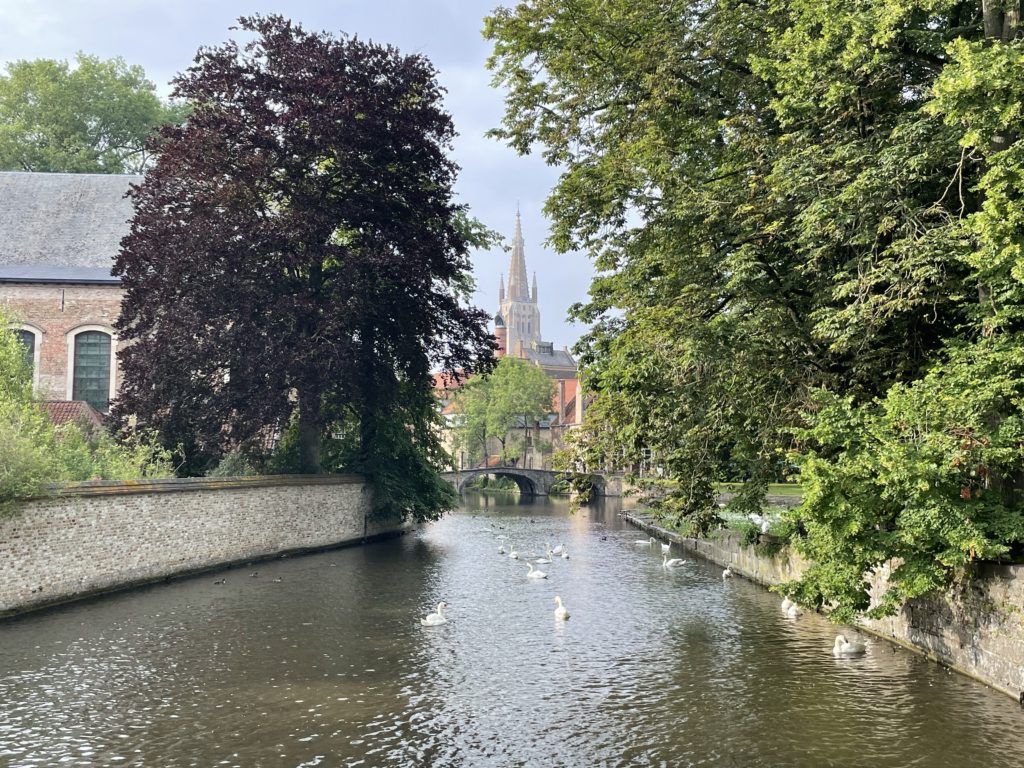
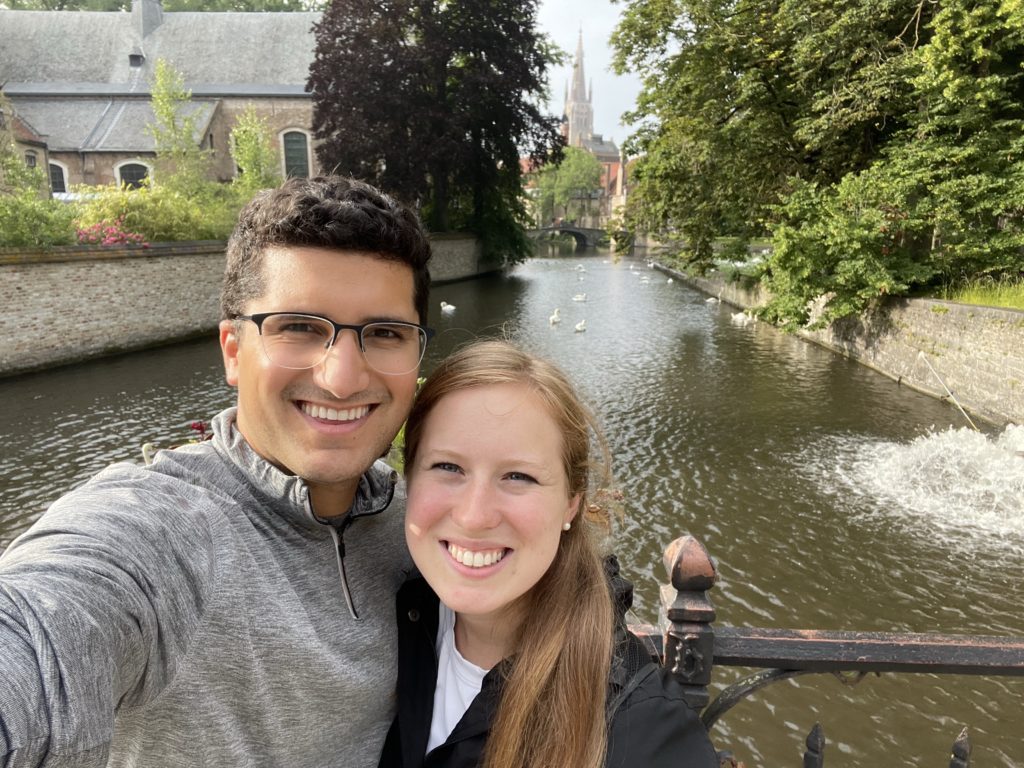
Food in Bruges
It was in Bruges that we got our first taste of Belgian food! Because of its history, Belgian food tends to take many forms and come from many different countries. It’s easy to find cuisines from just about any country in Belgium! That being said, Belgian chocolate and Belgian waffles seemed to be some of the most popular snacks.
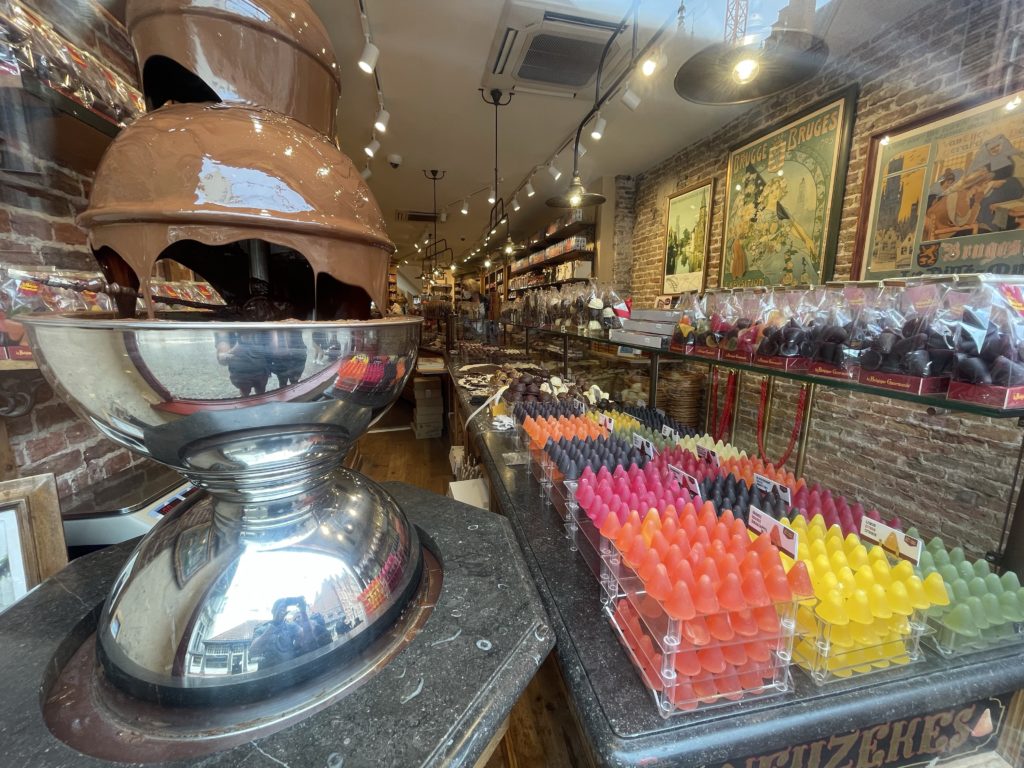
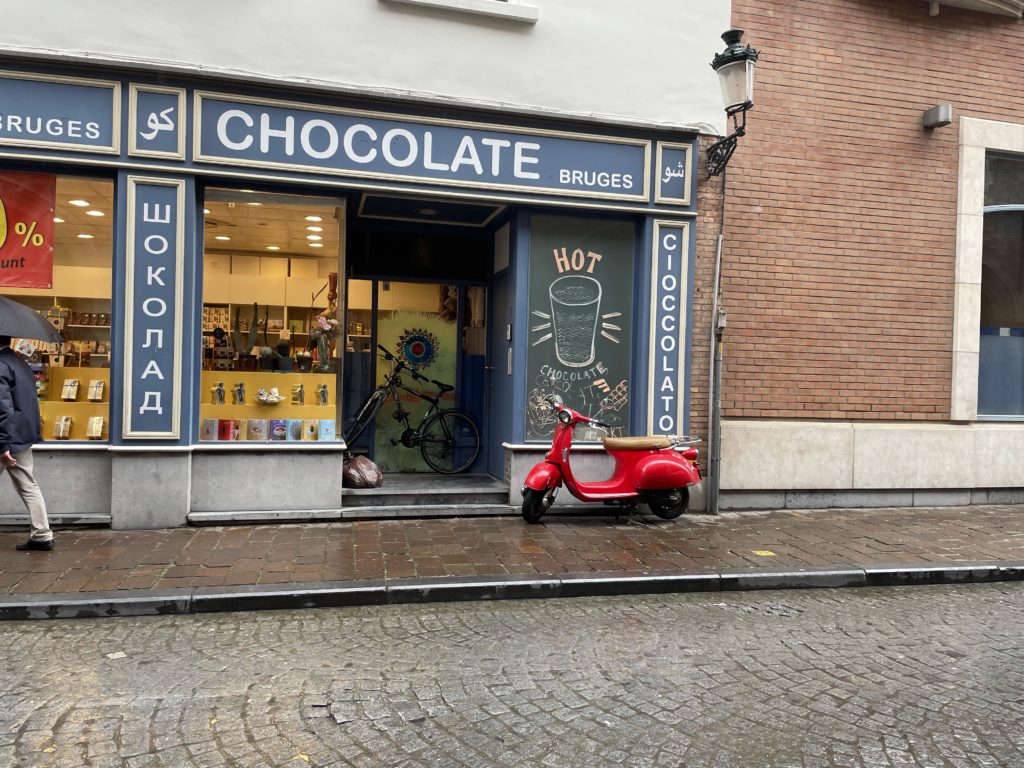
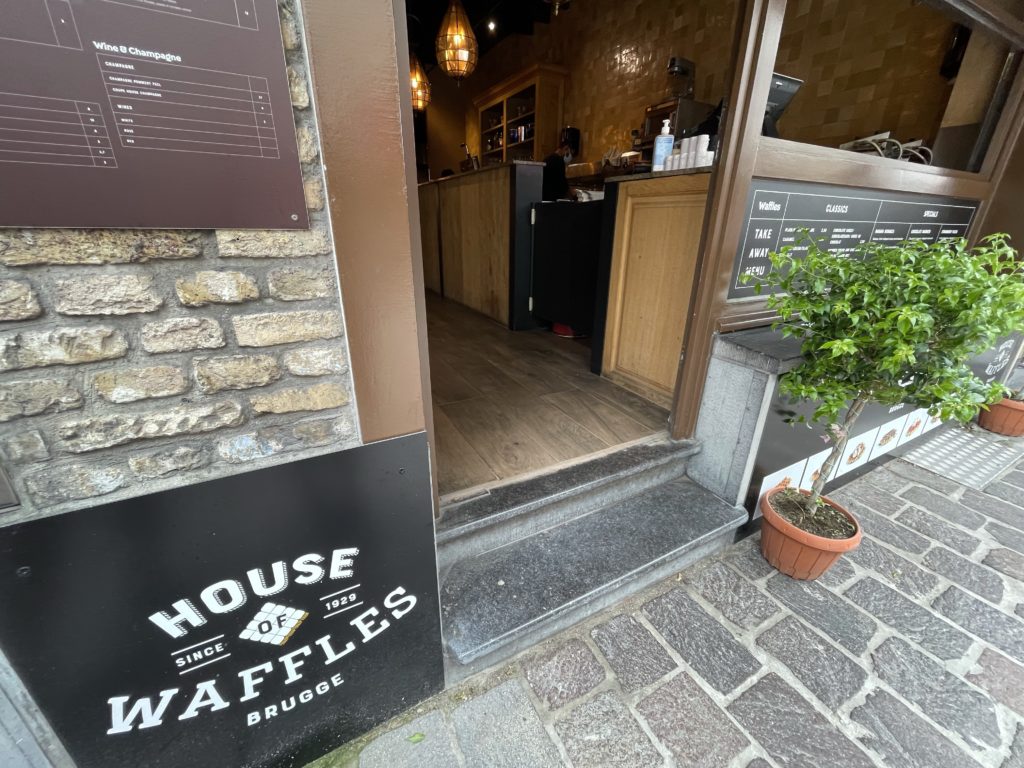
The waffles were so sweet, you didn’t need to put syrup on them! They already had large granules of sugar baked in, but we noticed most folks would sometimes spread butter on them and/or add brown sugar to the top of them.

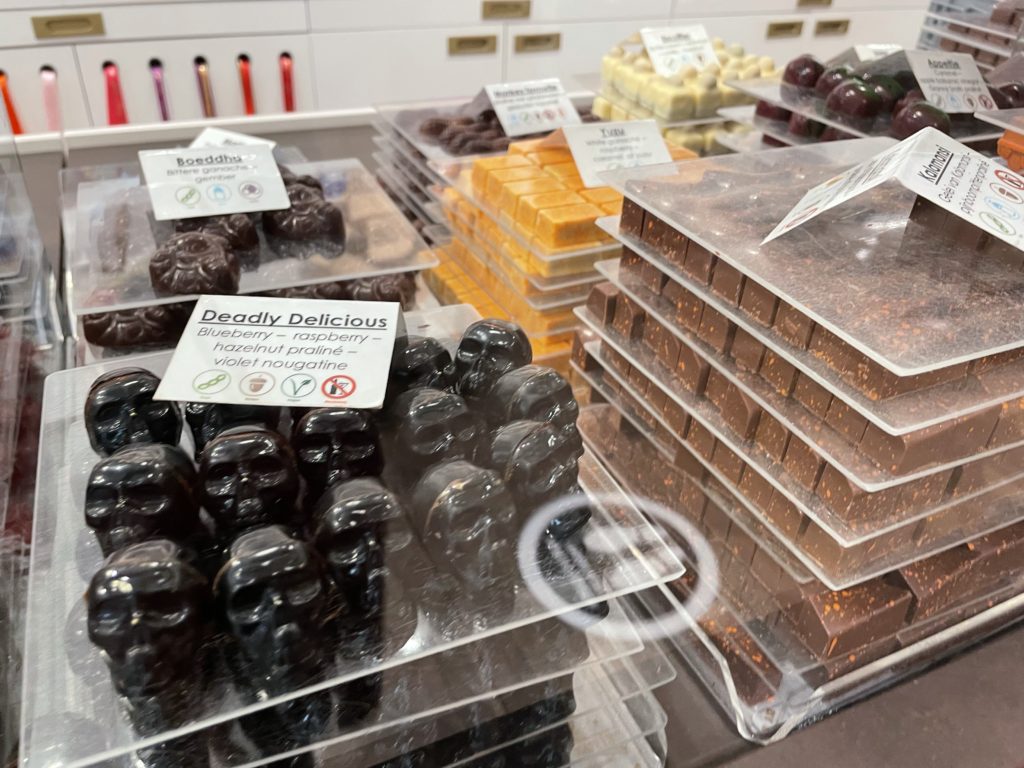
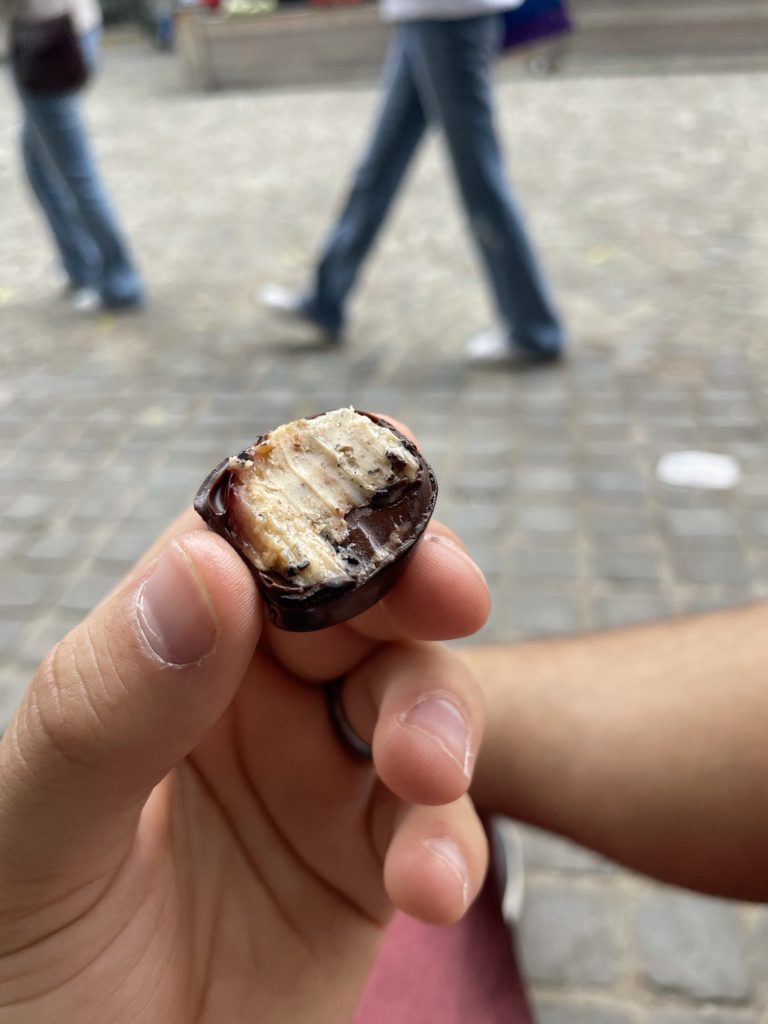

Belfry of Bruges
One of our favorite stops in Bruges was the Belfry of Bruges. Located in one of the main squares of the city, the belfry was originally the seat of the Bruges government. It got struck by lightning and partially burned down at one point, and they decided to move their official offices into a smaller building. But the belfry has been maintained and open to the public for some time now. It’s famous for its music-box sounding chimes that ring out over the city at all hours of the day.

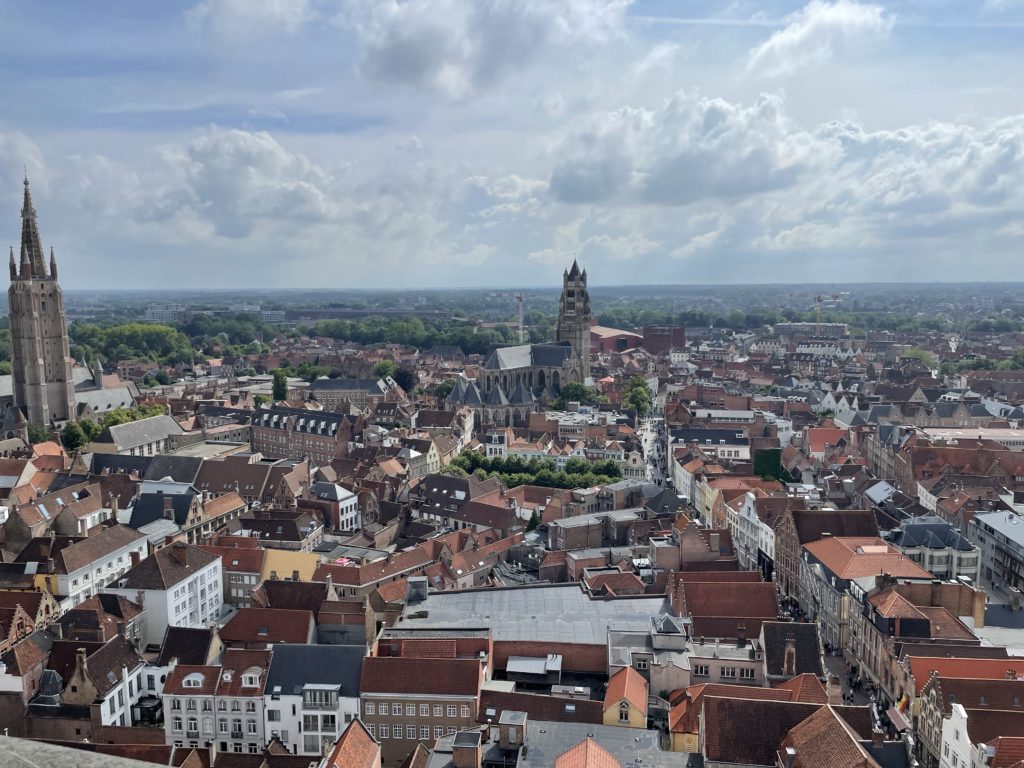
After a climb to the top of the belfry, we saw that it was indeed a giant music box that controlled all of the little bells! It’s the largest of its kind in the world.
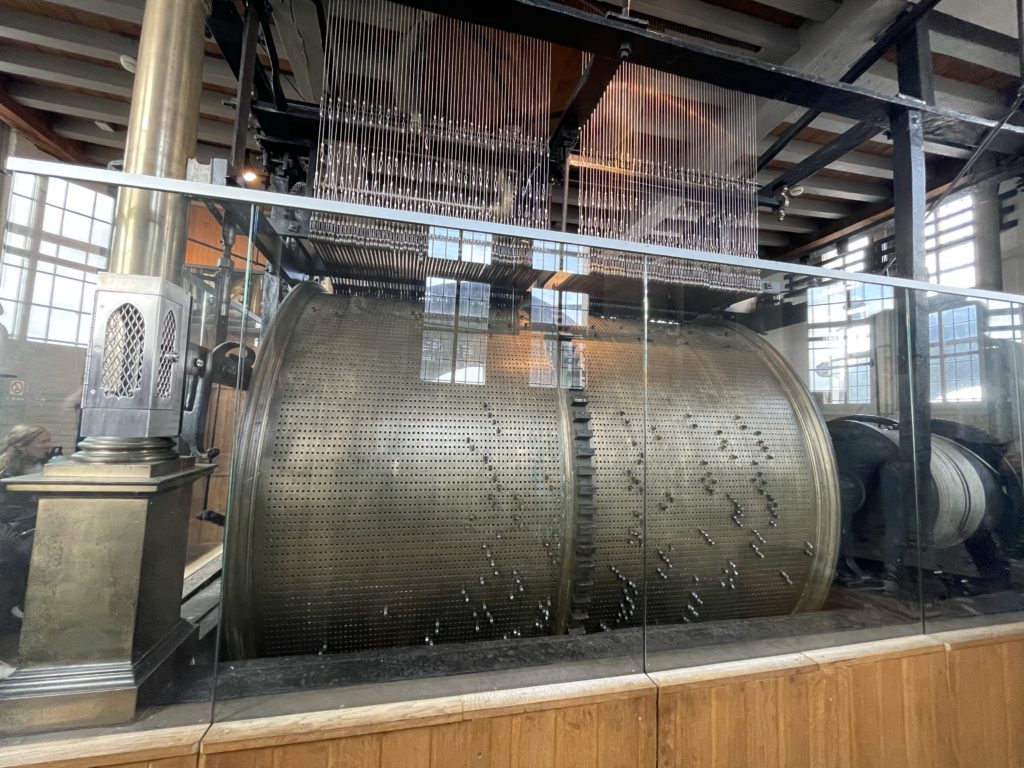
Going up one level from the “music box”, we got to see the actual bells and chimes that it controlled. It was incredible seeing how it was all made, but quite loud when you’re standing underneath the bells!
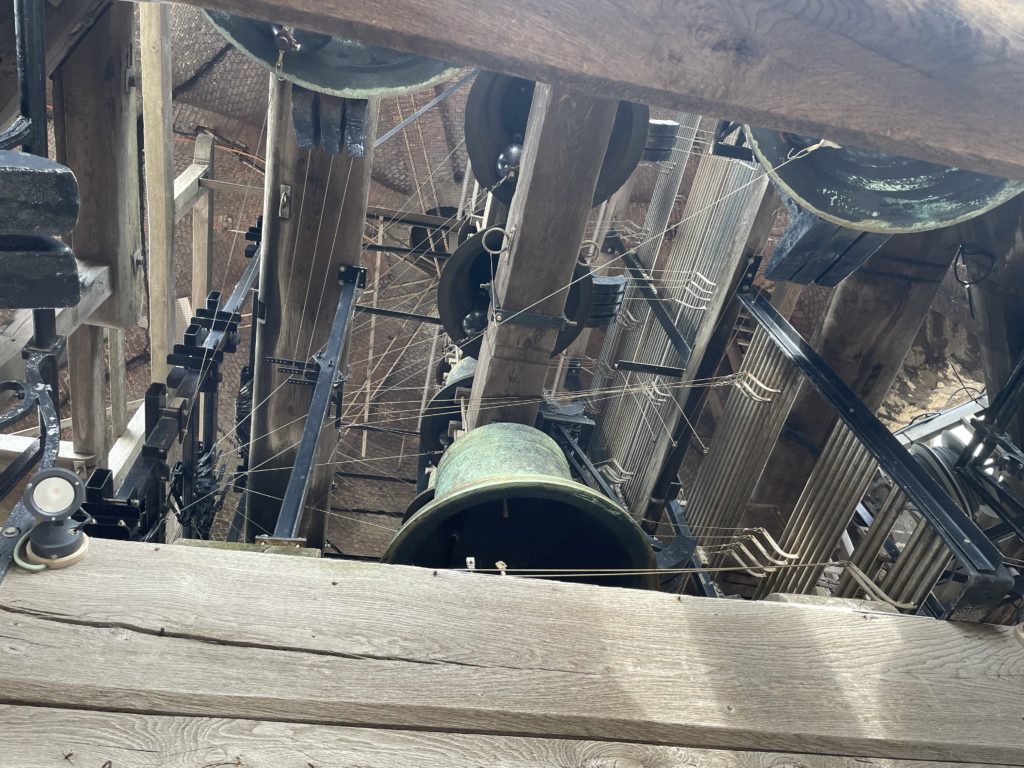
Final thoughts
Bruges is an absolutely charming city. We loved feeling like we were stepping back in time to see the older sides of Europe through the well-kept historic buildings. We can’t wait to one day come back!
